Geoffrey Bawa is an unforgettable and continuous inspiration to most architects. There is an intangible relationship with nature that is so beautifully established. To see our inspiration translate into our work - in design, in spatial character, in connection and reverence towards nature - finding new meaning in every site we build on, feels wonderful and magical.
As we look back on our projects, it feels great to see many of our spaces carrying the sensibilities and sensitivites that Bawa inspired throughout his practice. The following set of images puts our project photos alongside some expertly crafted spaces by the tropical wizard. It is our ode to the master architect, a reflection of the small but diverse ways in which he has touched our design thinking and building values.
Building with nature
Watching these two pictures side by side leaves us with a sense of achievement and happiness. The first picture is from our project, The House with Three Pavilions in Goa. The second picture is from Ena De Silva's house, built by the master Geoffrey Bawa.
Verandahs celebrating the trees of the land
⠀
The first picture is from our project Navovado, looking at the old mango tree preserved during construction on site for this vacation house in Goa. The second photograph is from Bawa's Lunuganga estate, framing the magnificent tree by the lake.⠀⠀
Making greenery part of the building elevation
⠀
The first picture is from our project Navovado, as boundaries are blurred between the house and its landscape. The second photograph is from Bawa's Lunuganga country estate, picturing the house among the greenery perceived from the lawn.
A Place in The Shade⠀
⠀
The first picture is from our project The House With Three Pavilions, as the semi open corridor faces the internal courtyard on one side, touching it with an in situ seat and transitioning into different rooms on the other sides, each celebrating different views. The second photograph is from Bawa's estate, as the corridor behaves like a verandah even as it connects the indoor spaces from side to side. ⠀
A Welcoming Wilderness⠀
⠀
The first picture frames the entrance to a pavilion at The House With Three Pavilions, brought alive with the growth of native plant species. The second photograph is from Bawa's Lunuganga garden, with the entrance pathway bordered by the lush wildscape on one side. ⠀



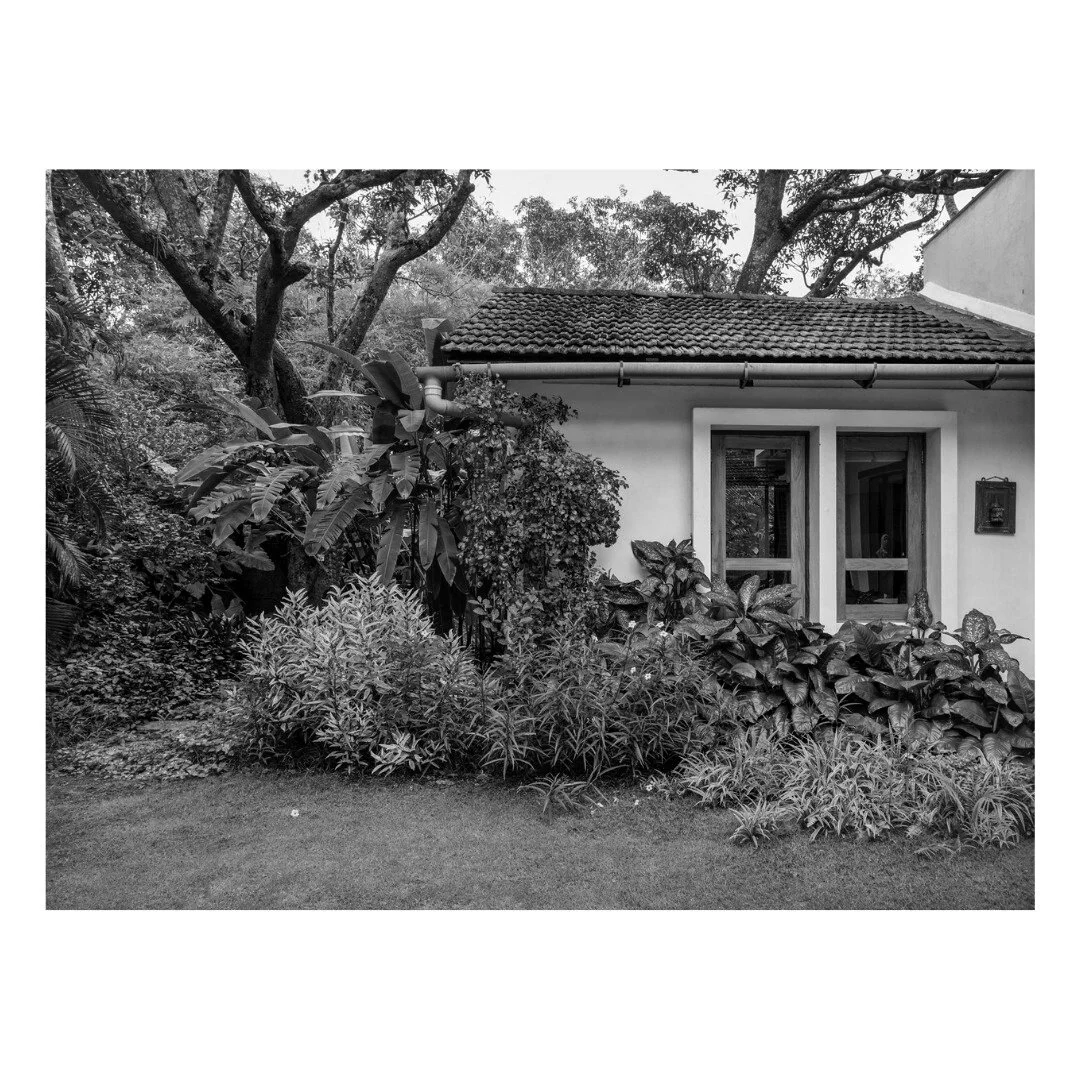
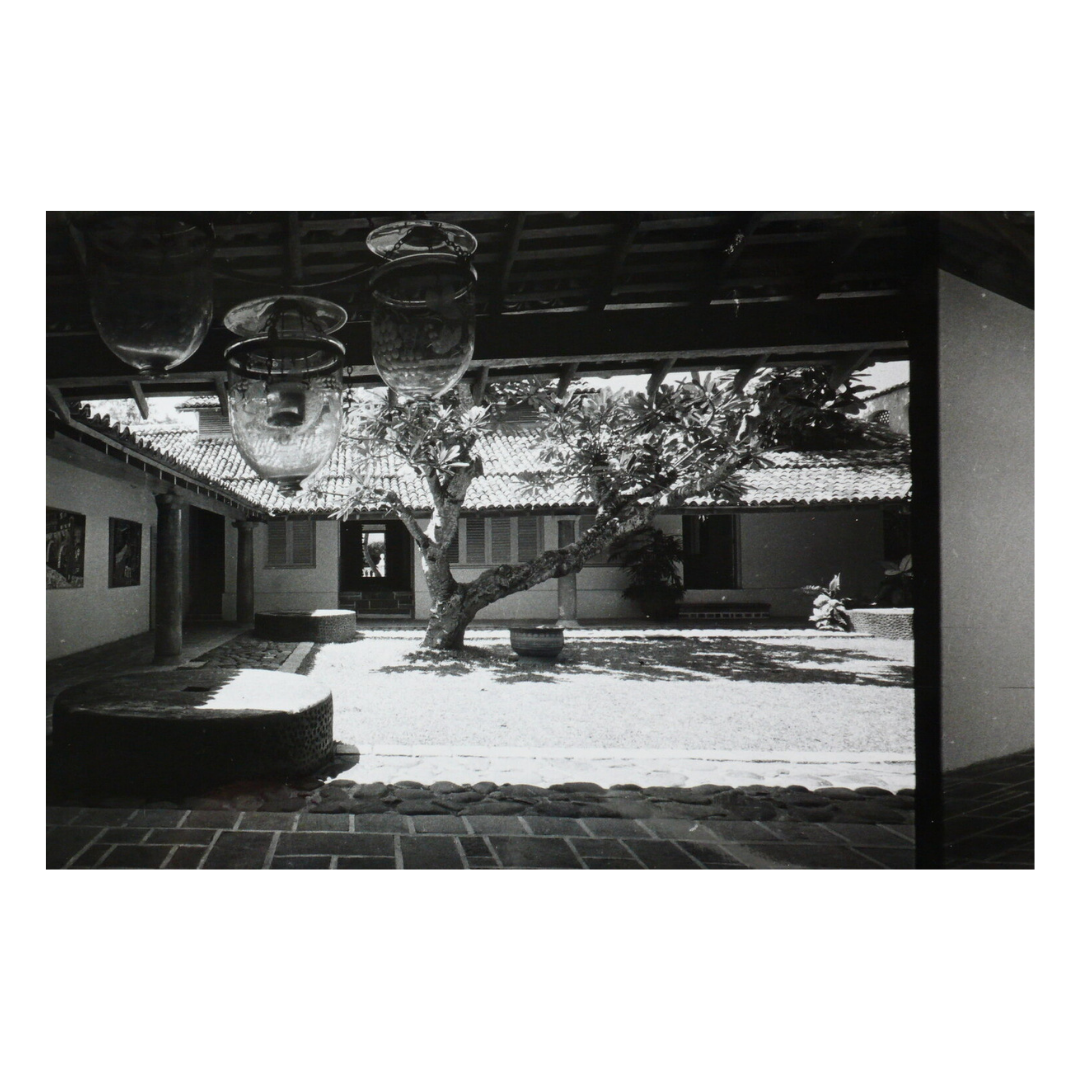
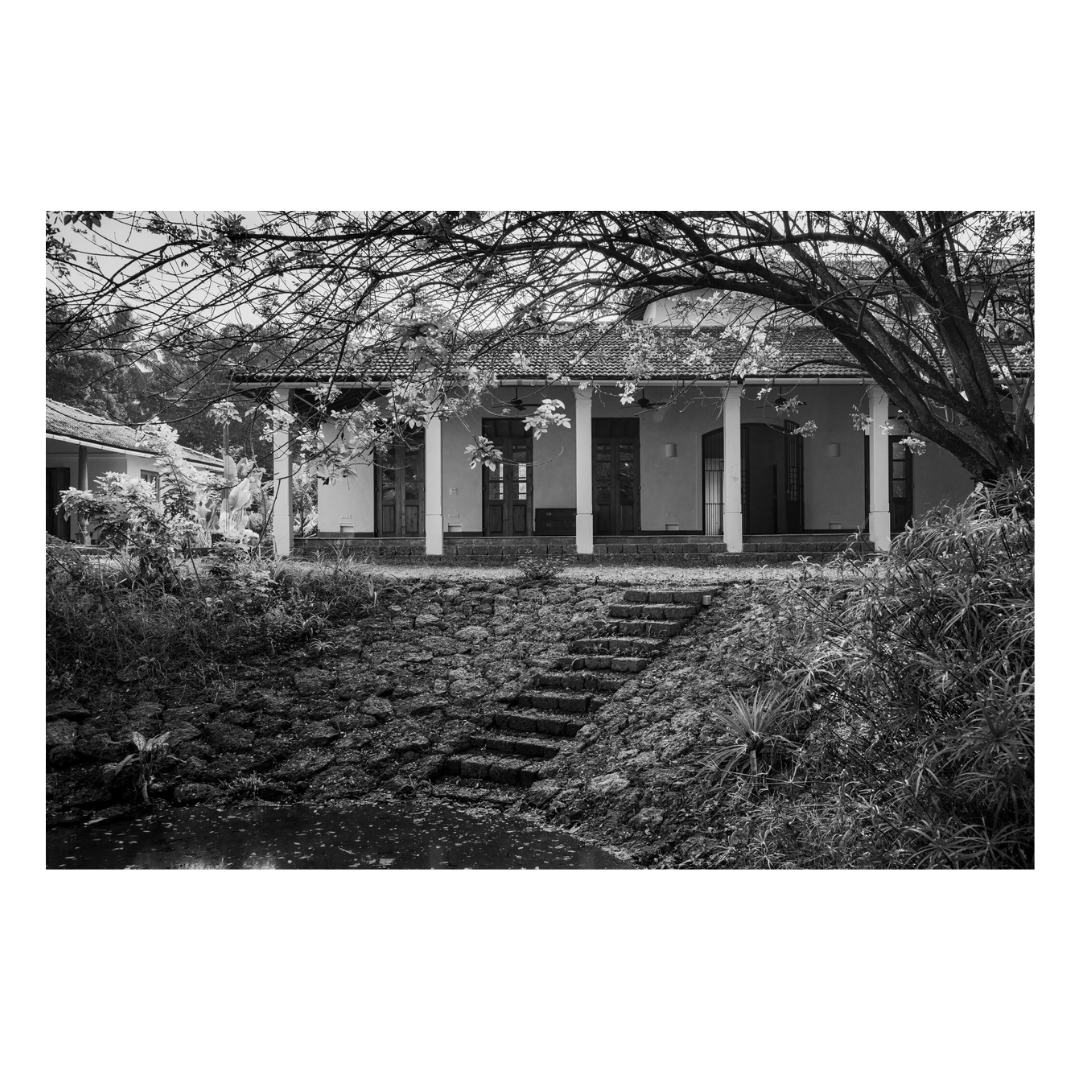
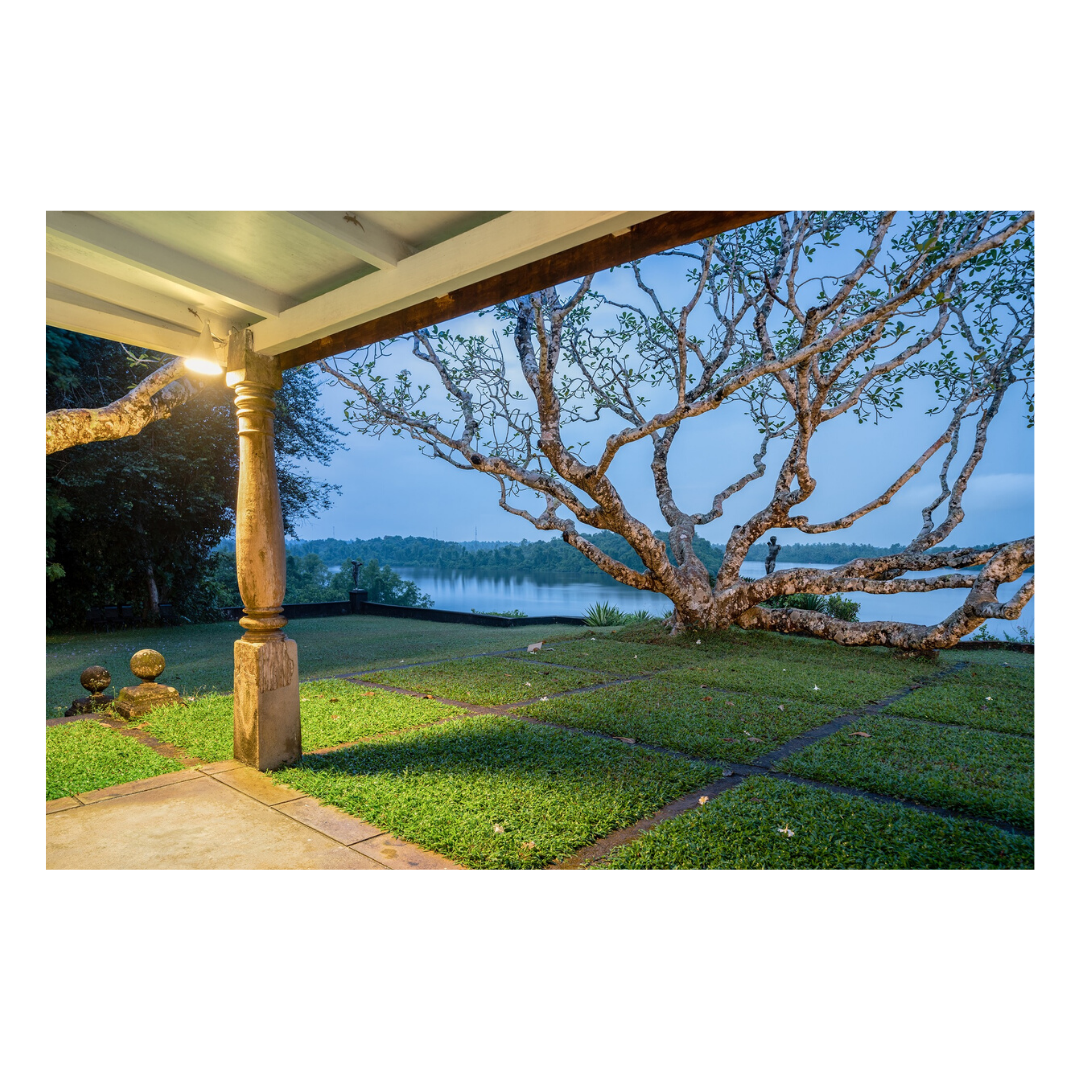


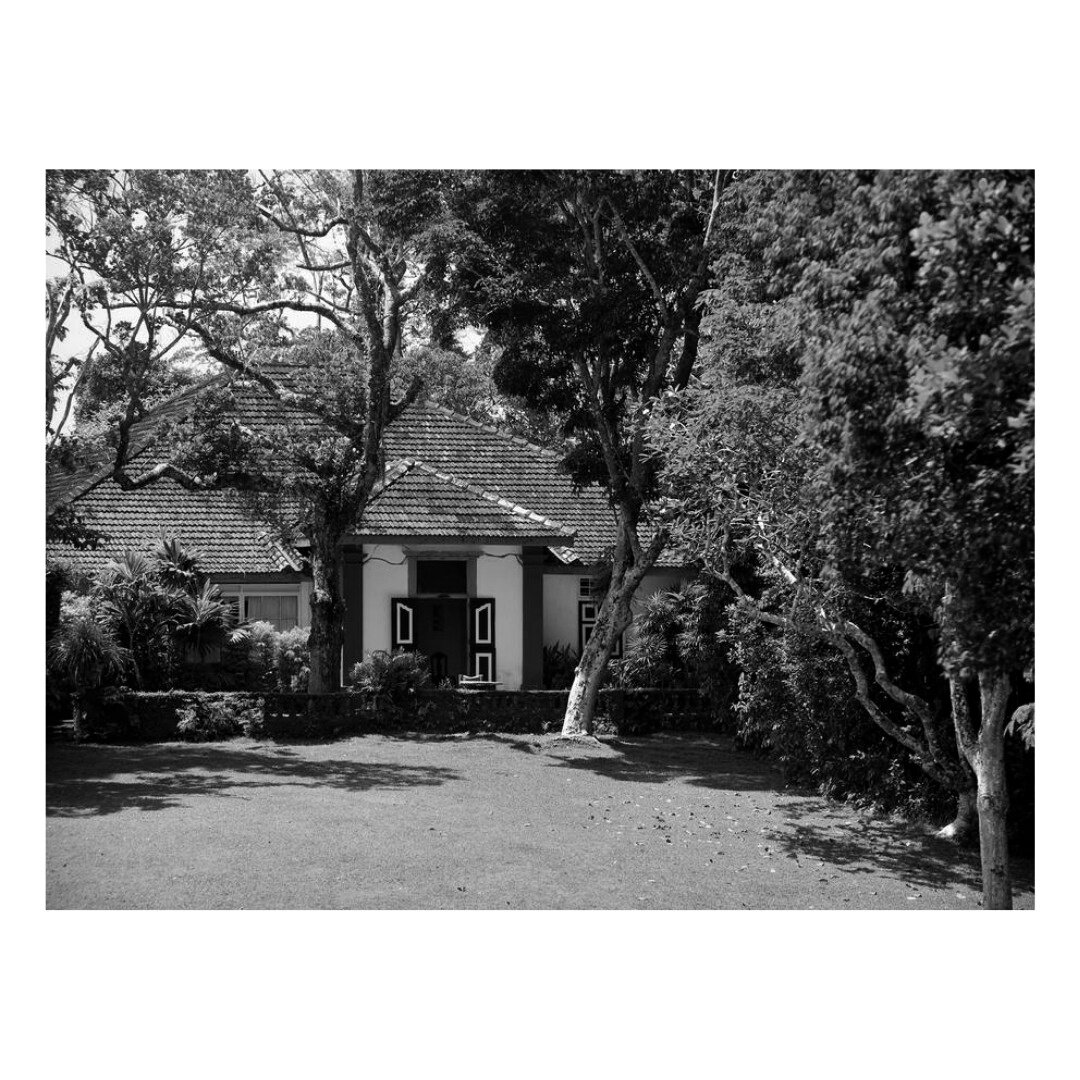
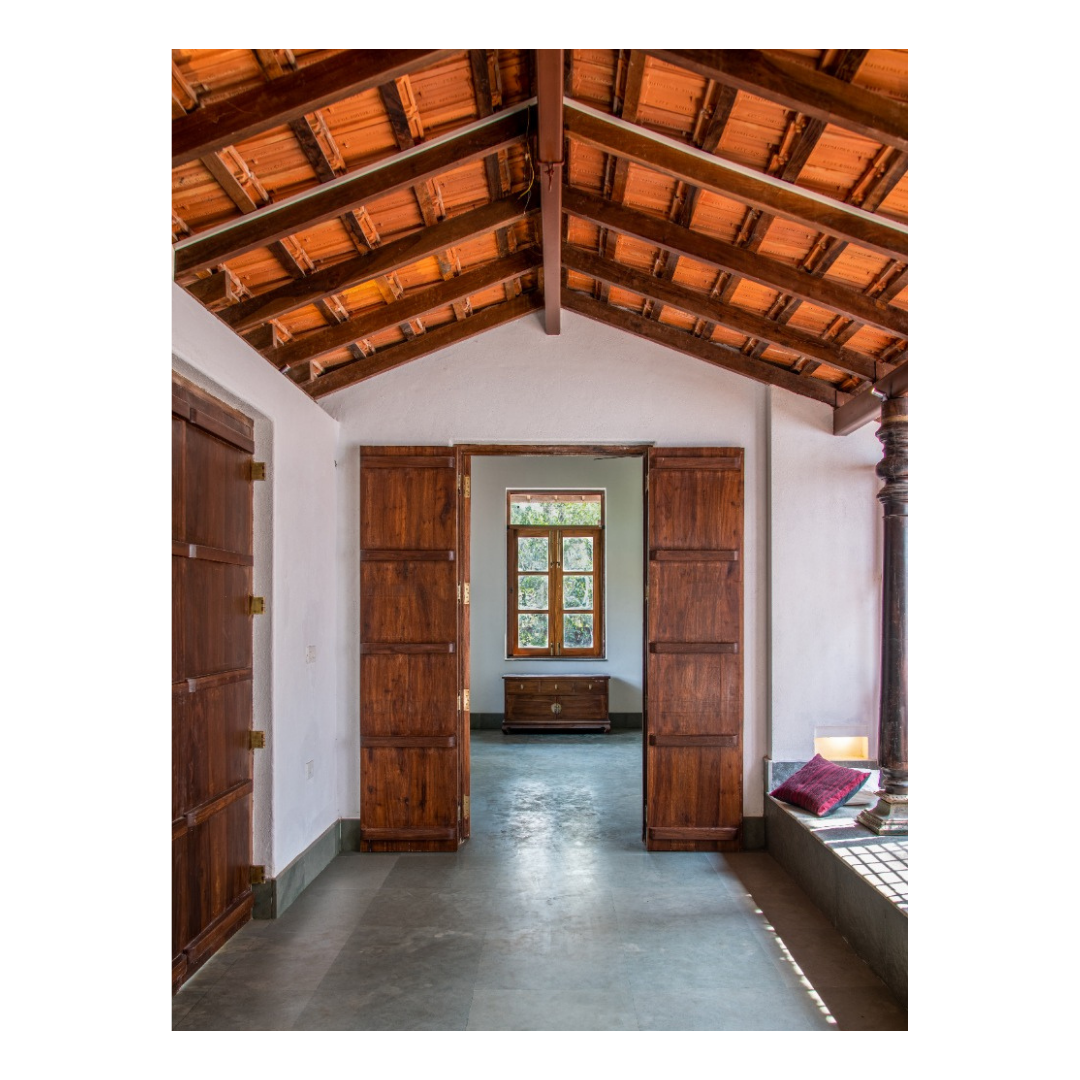
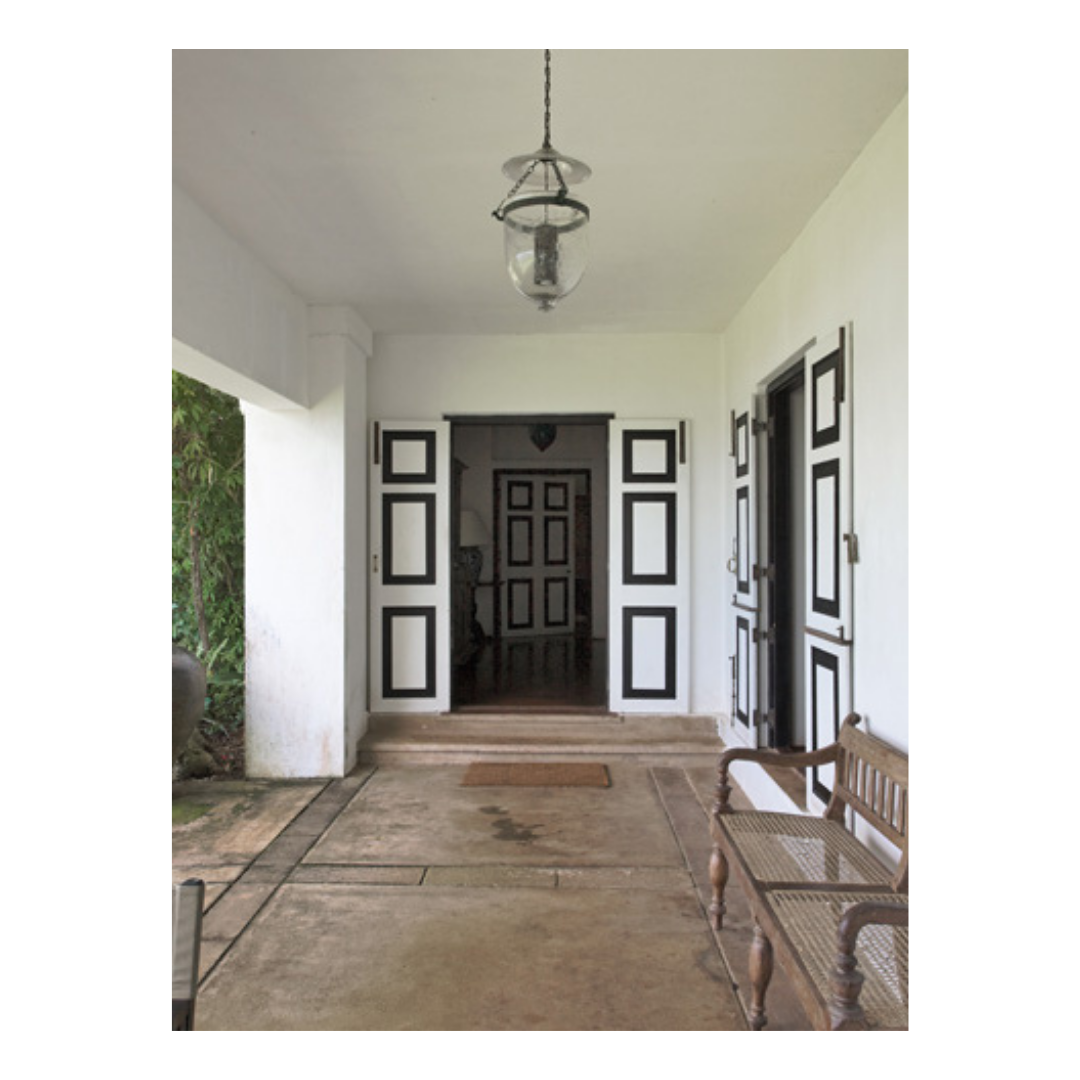
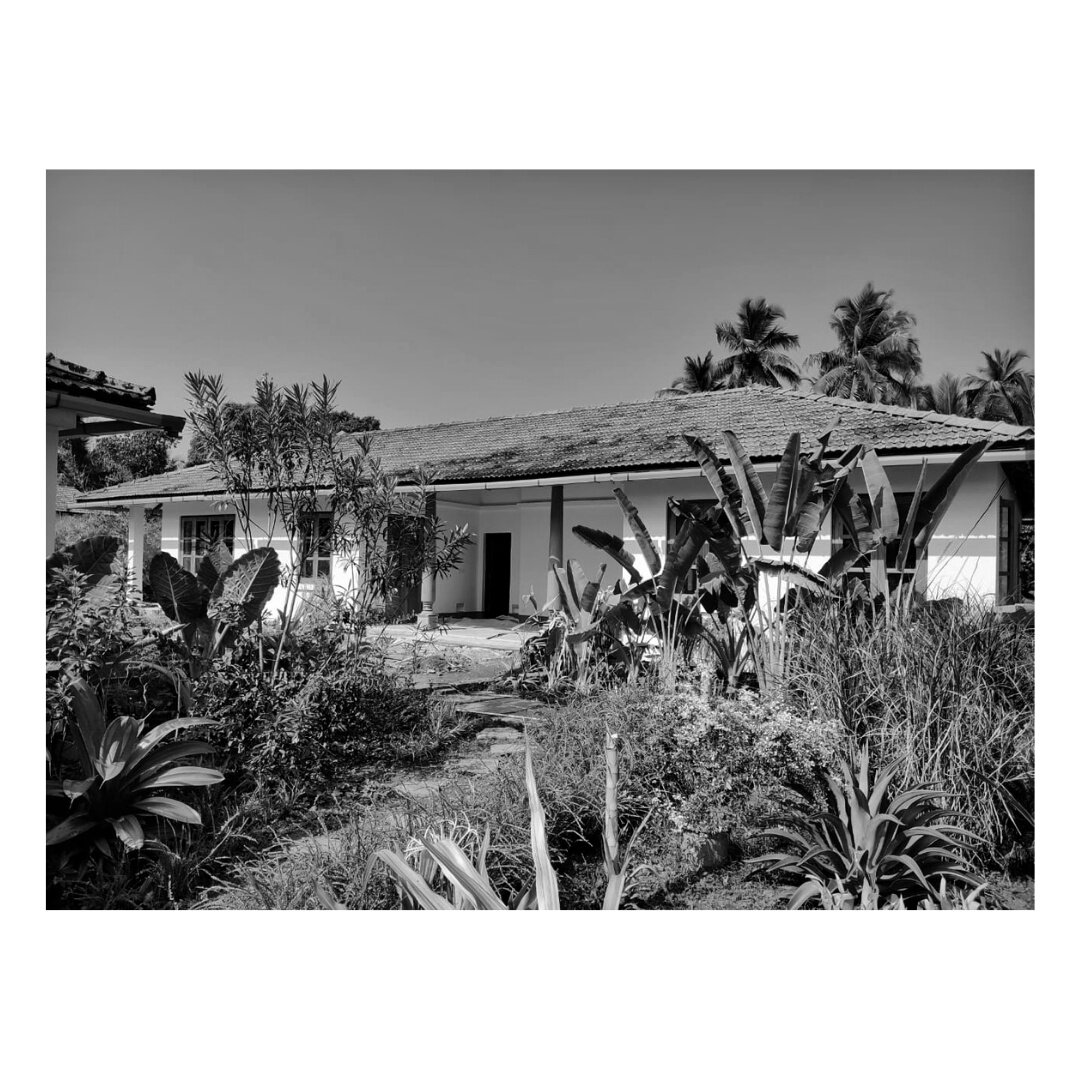
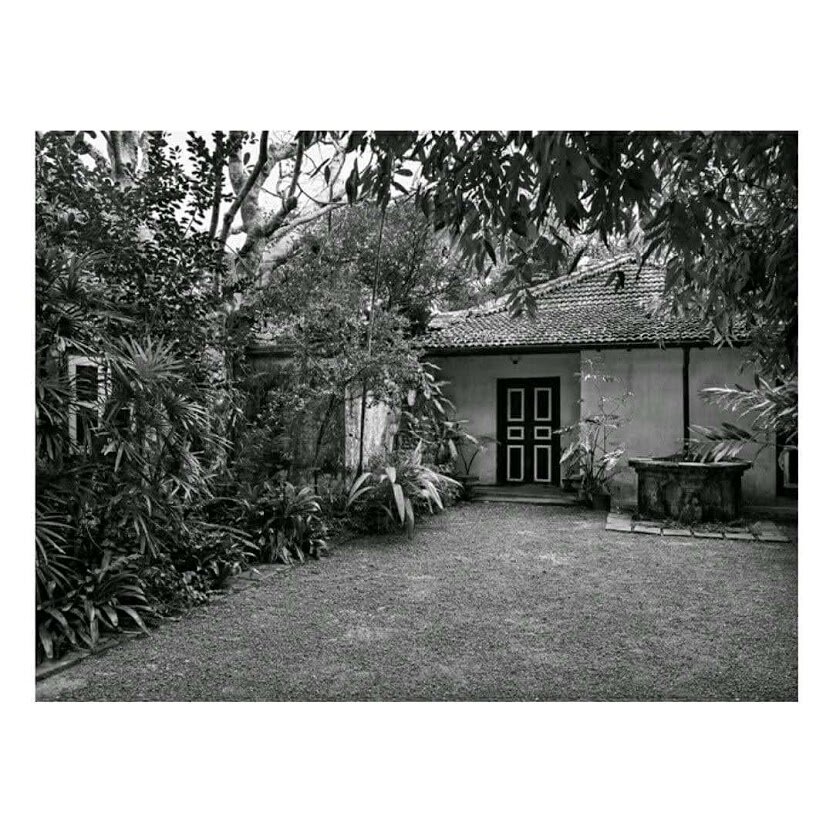


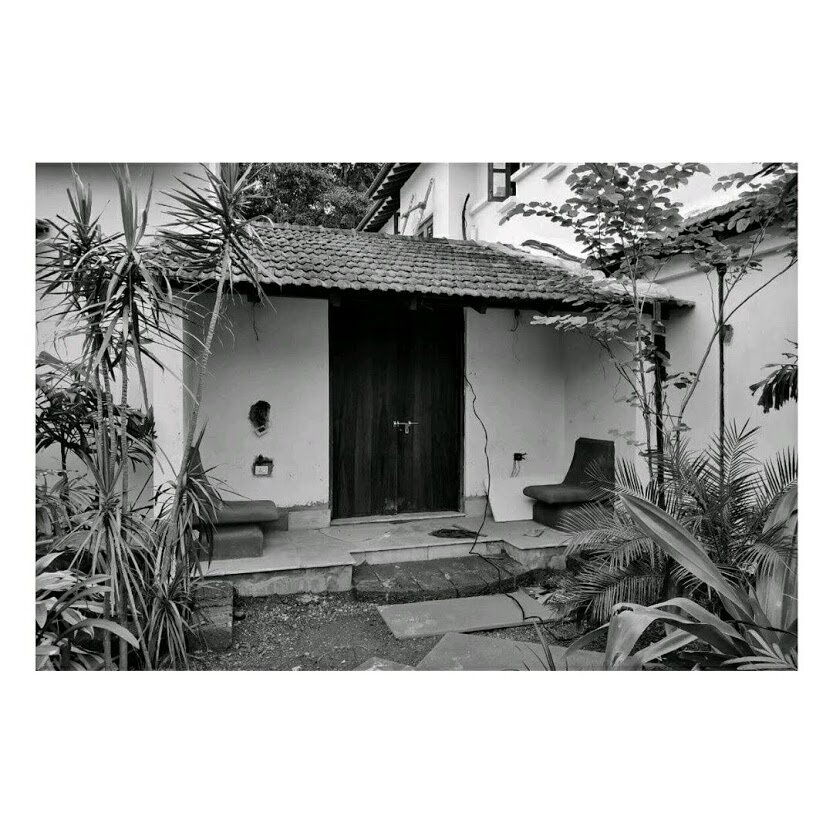








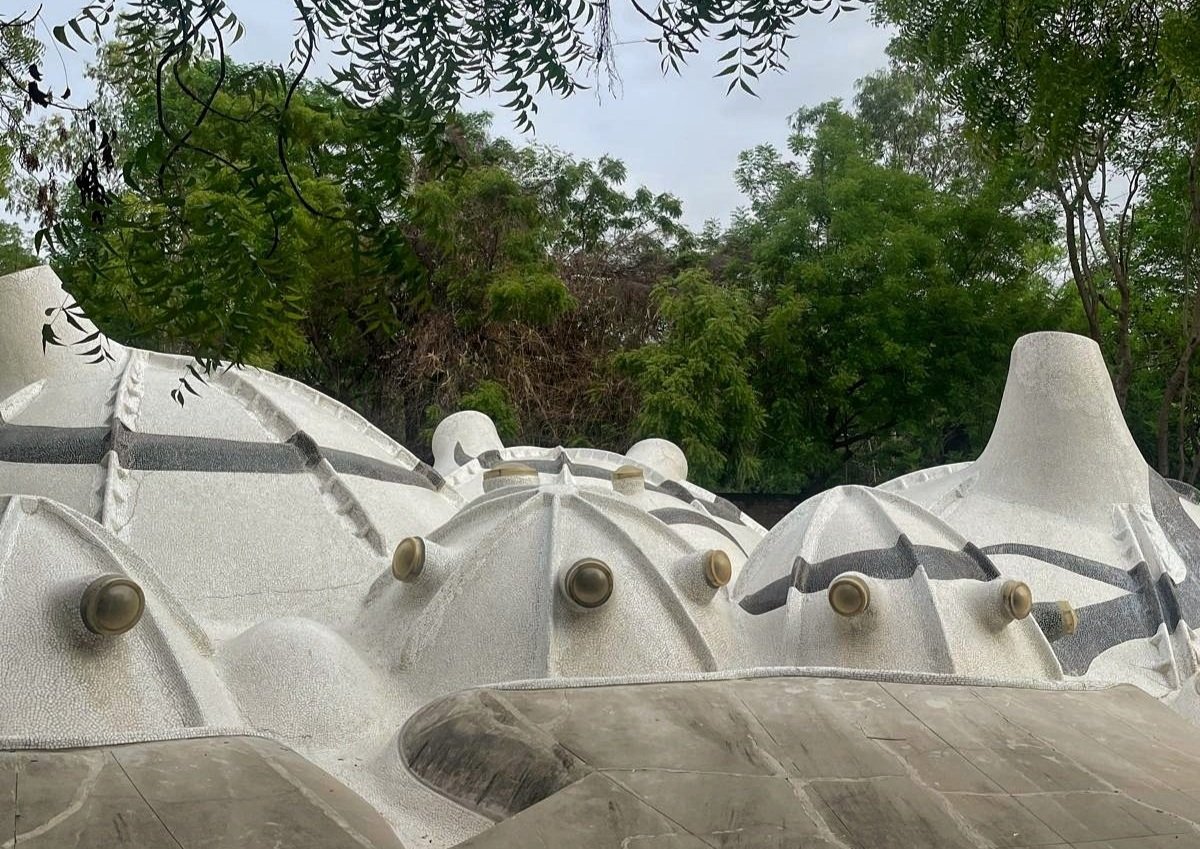








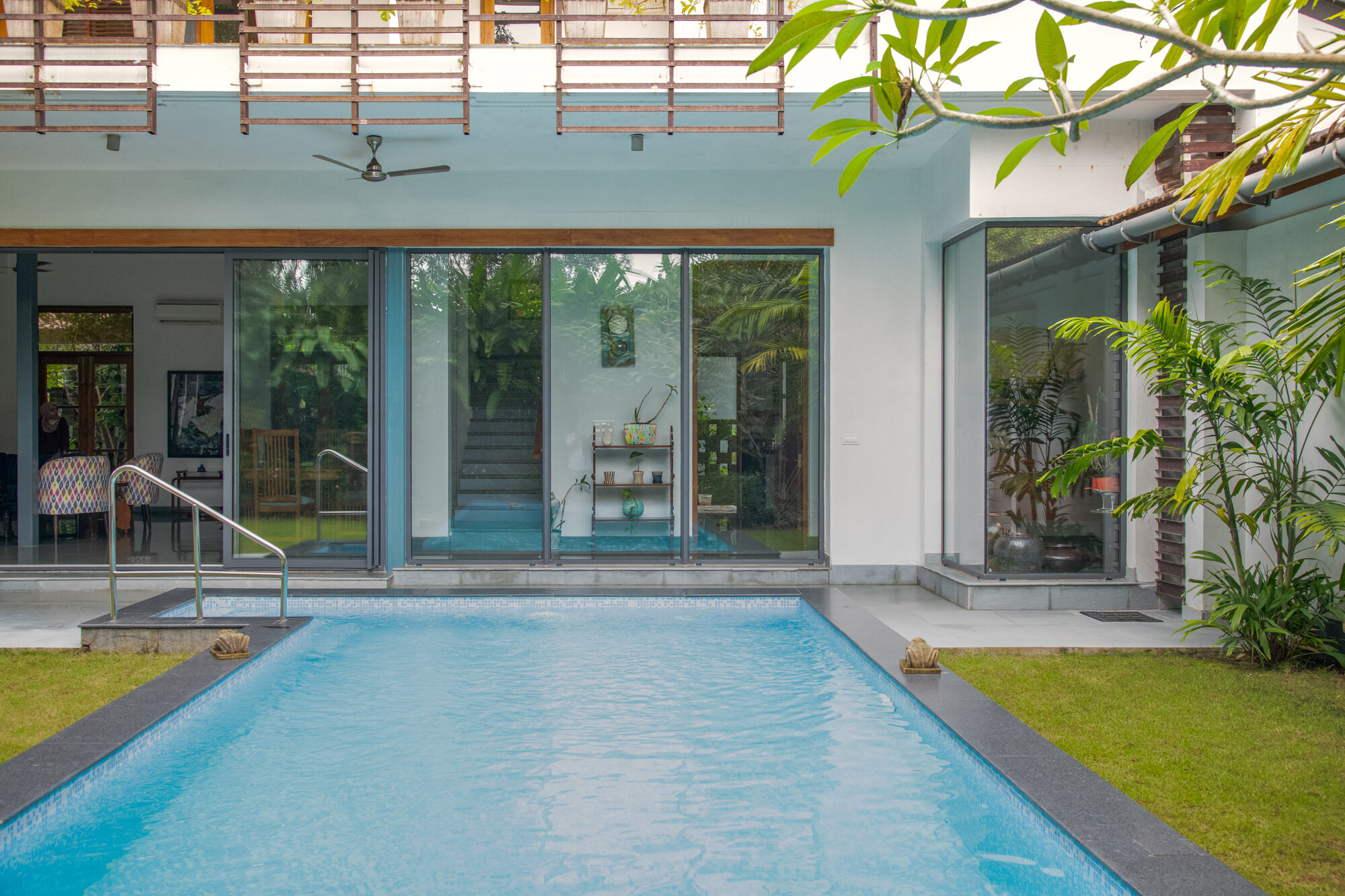
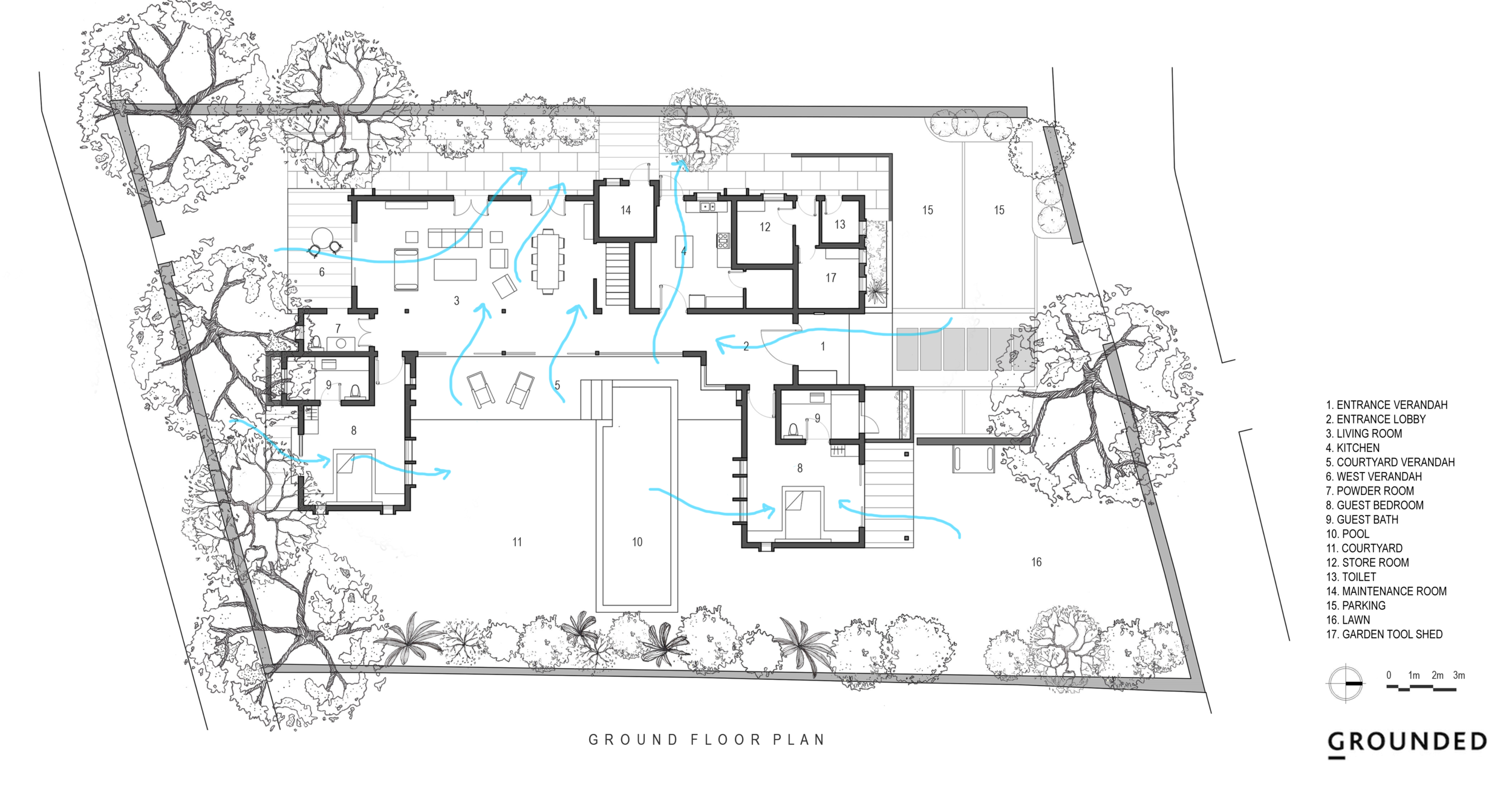

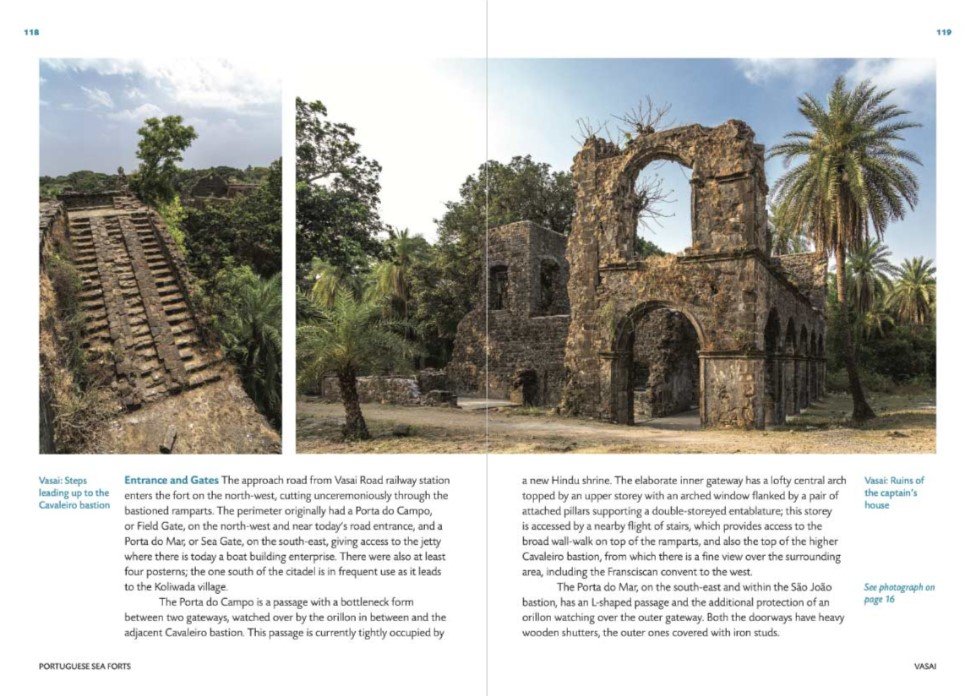

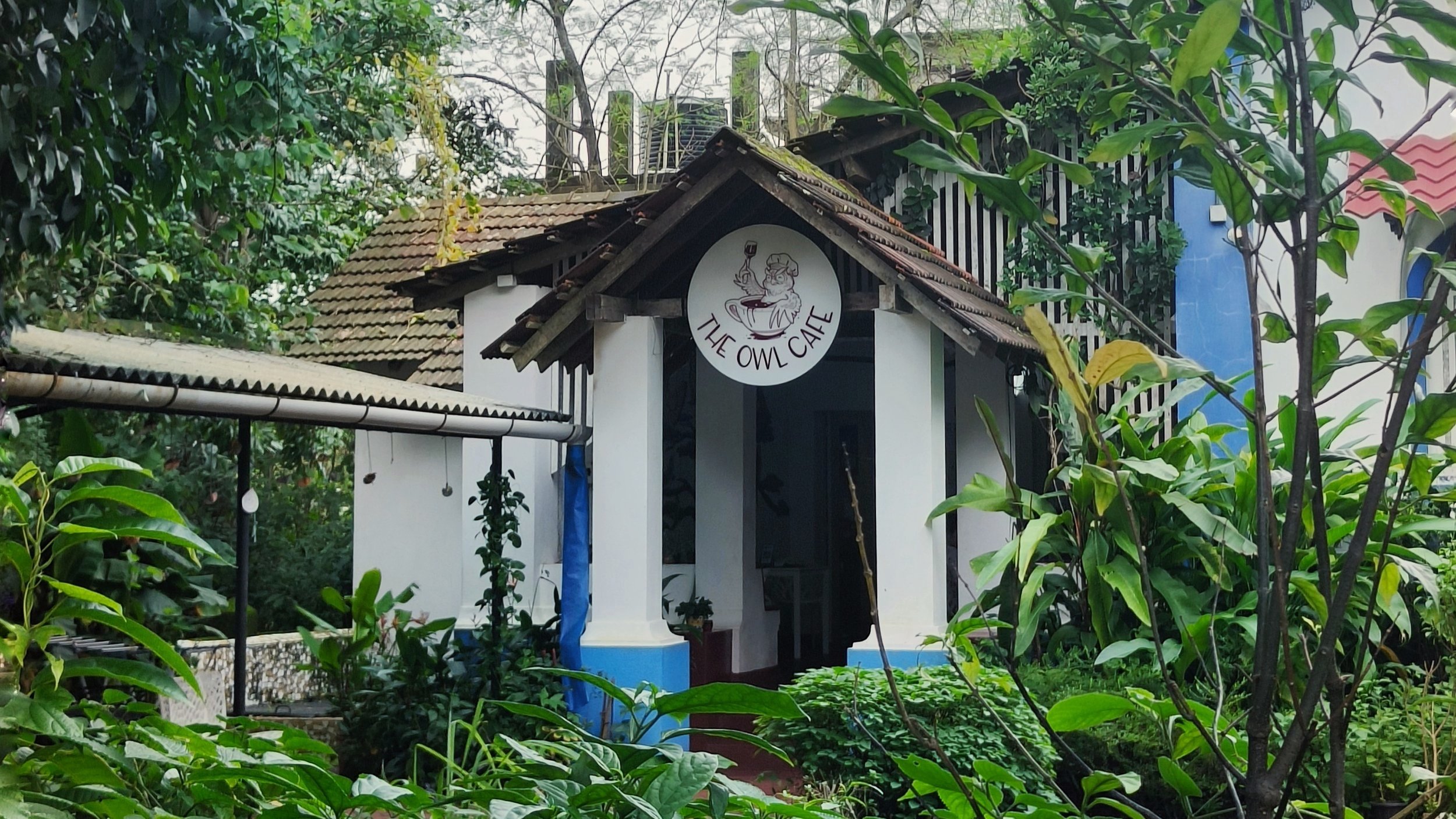



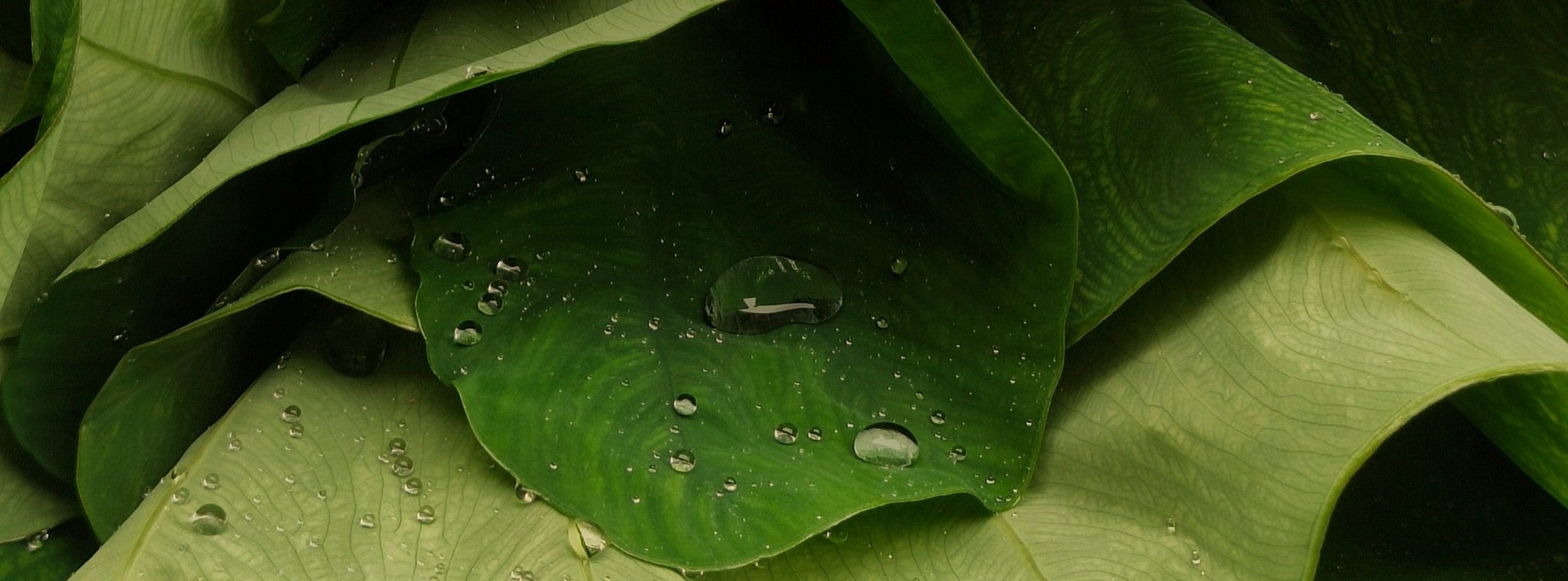
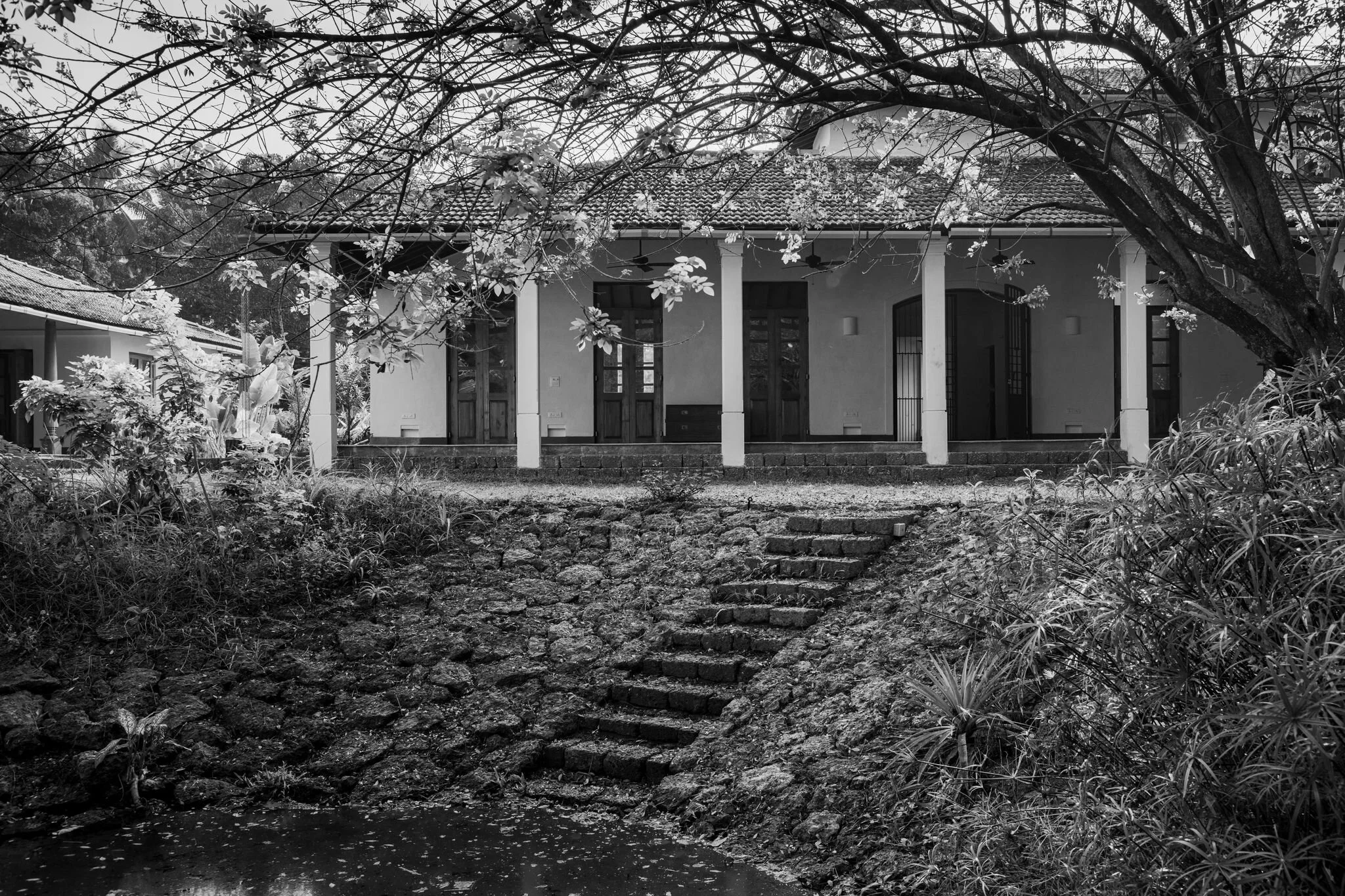
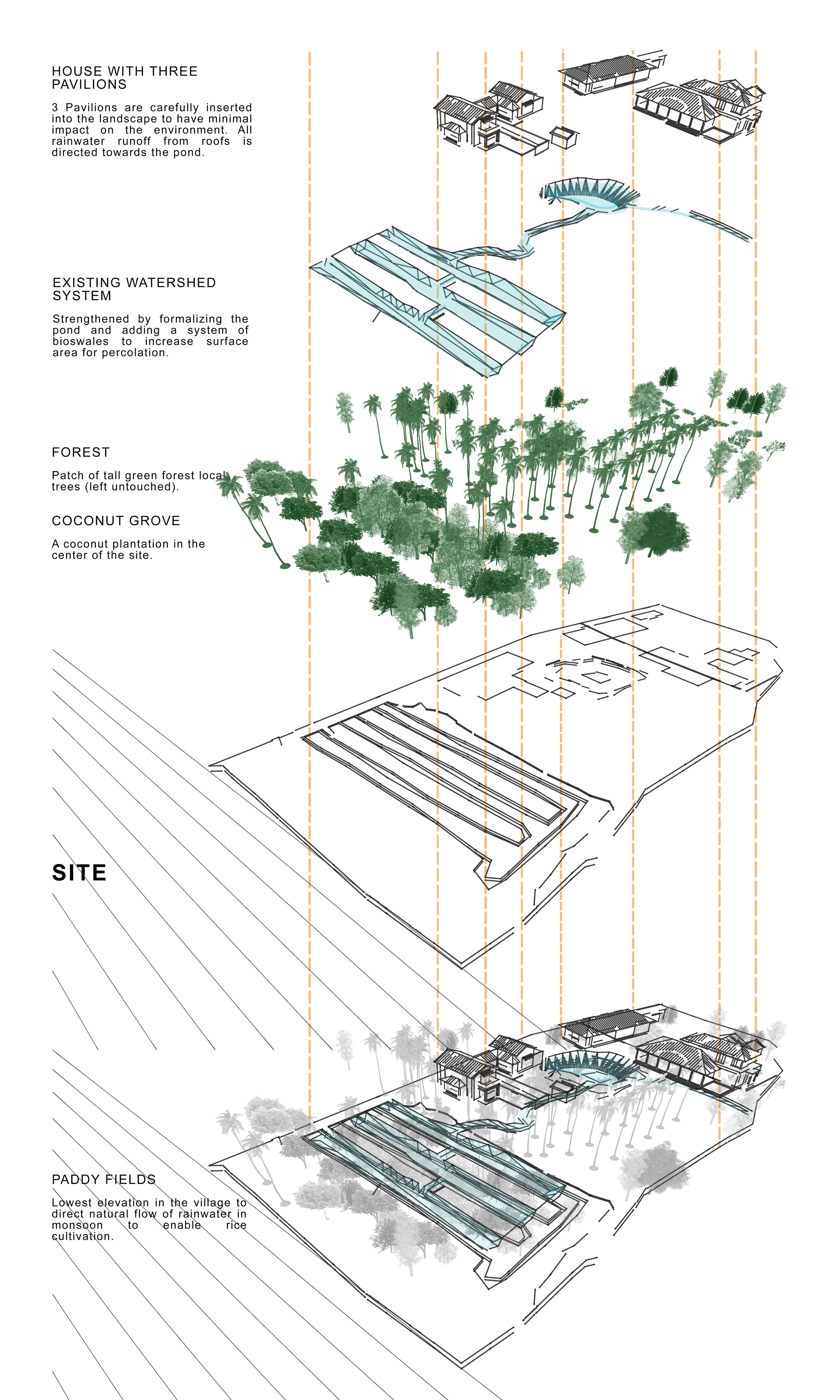

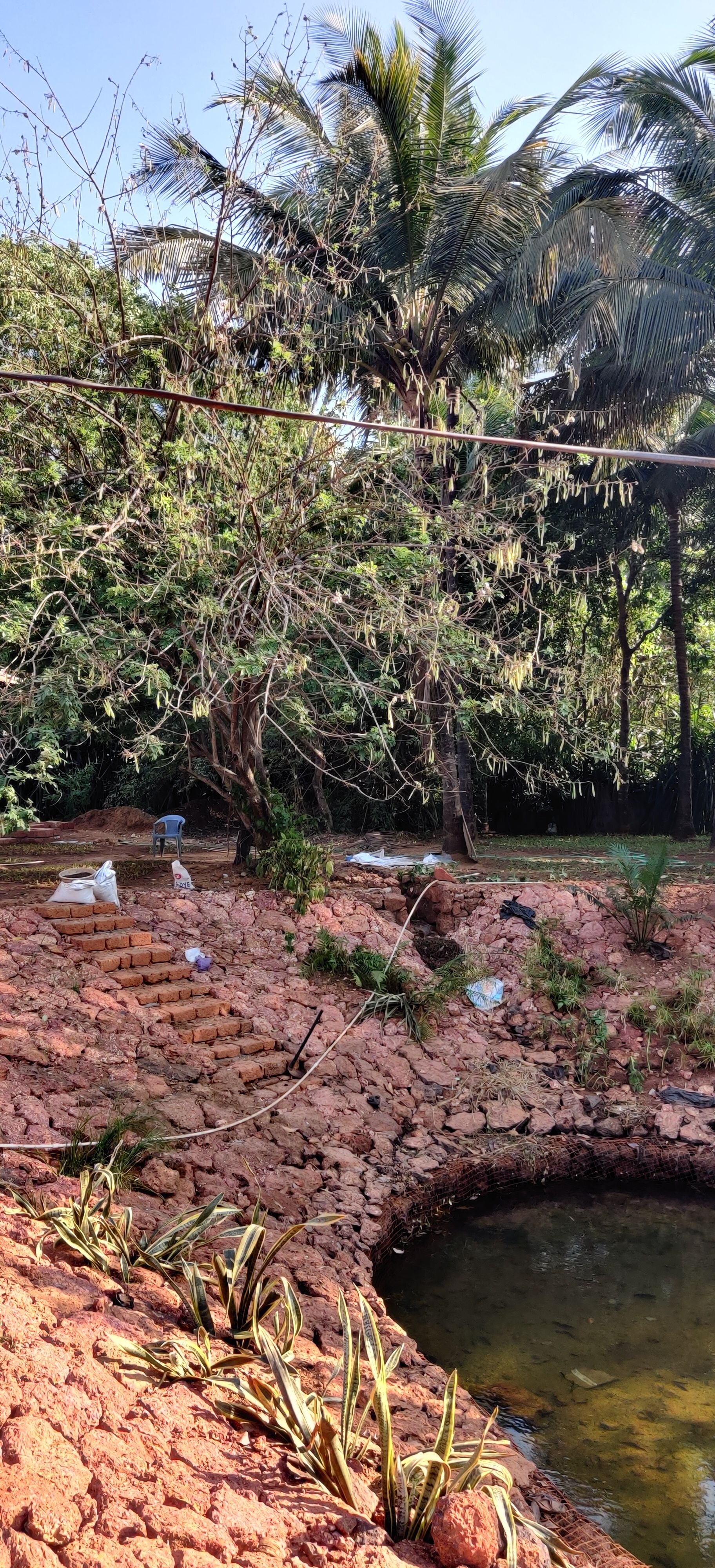
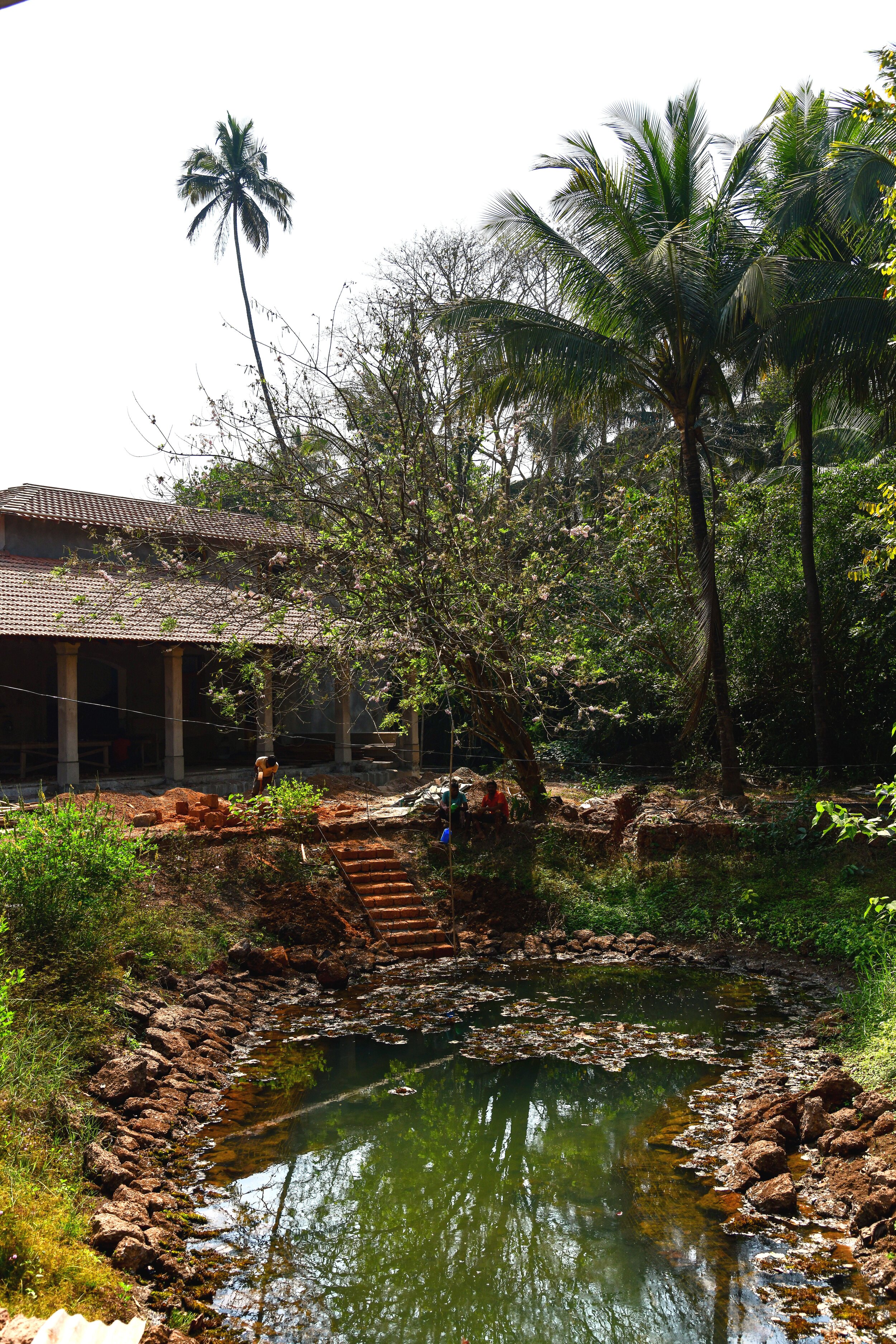
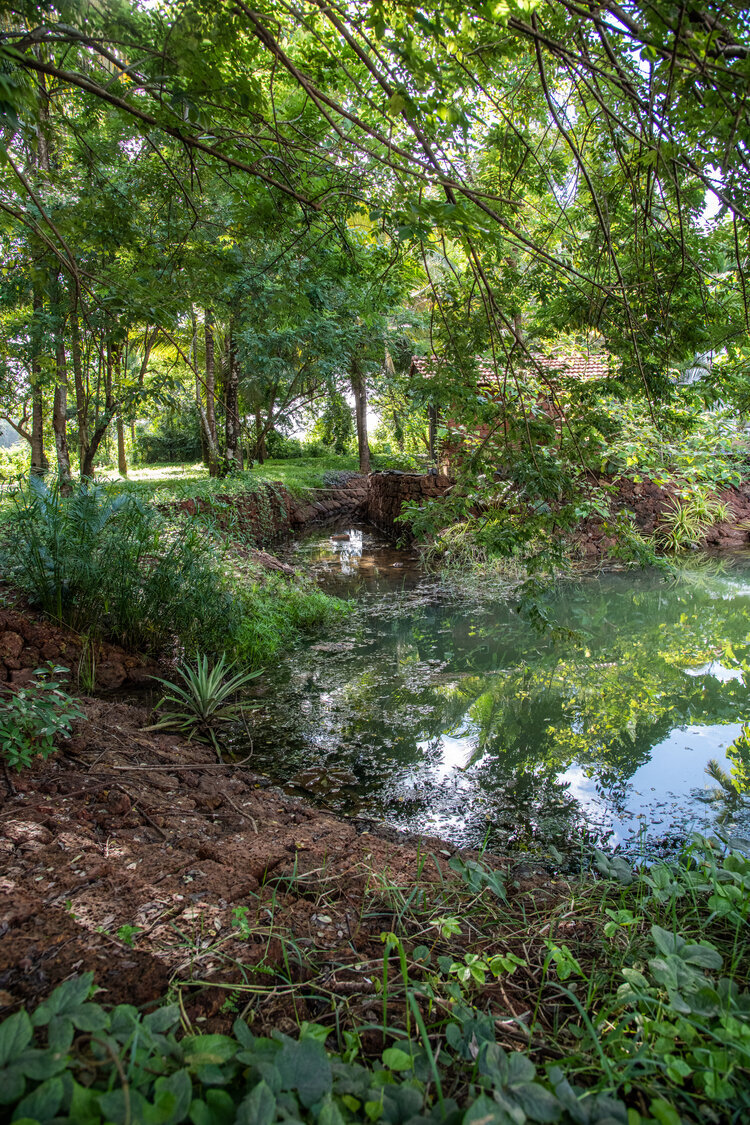
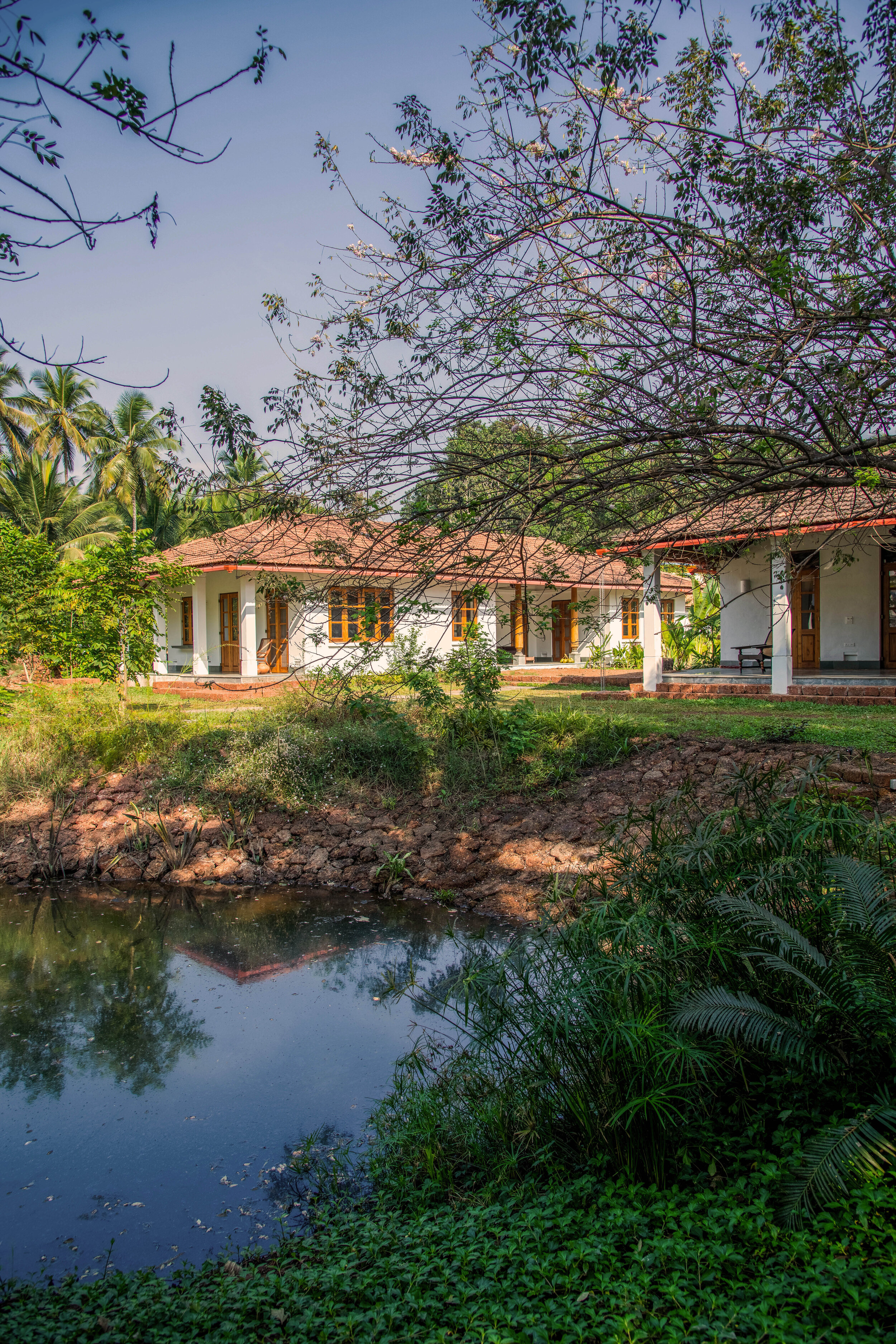

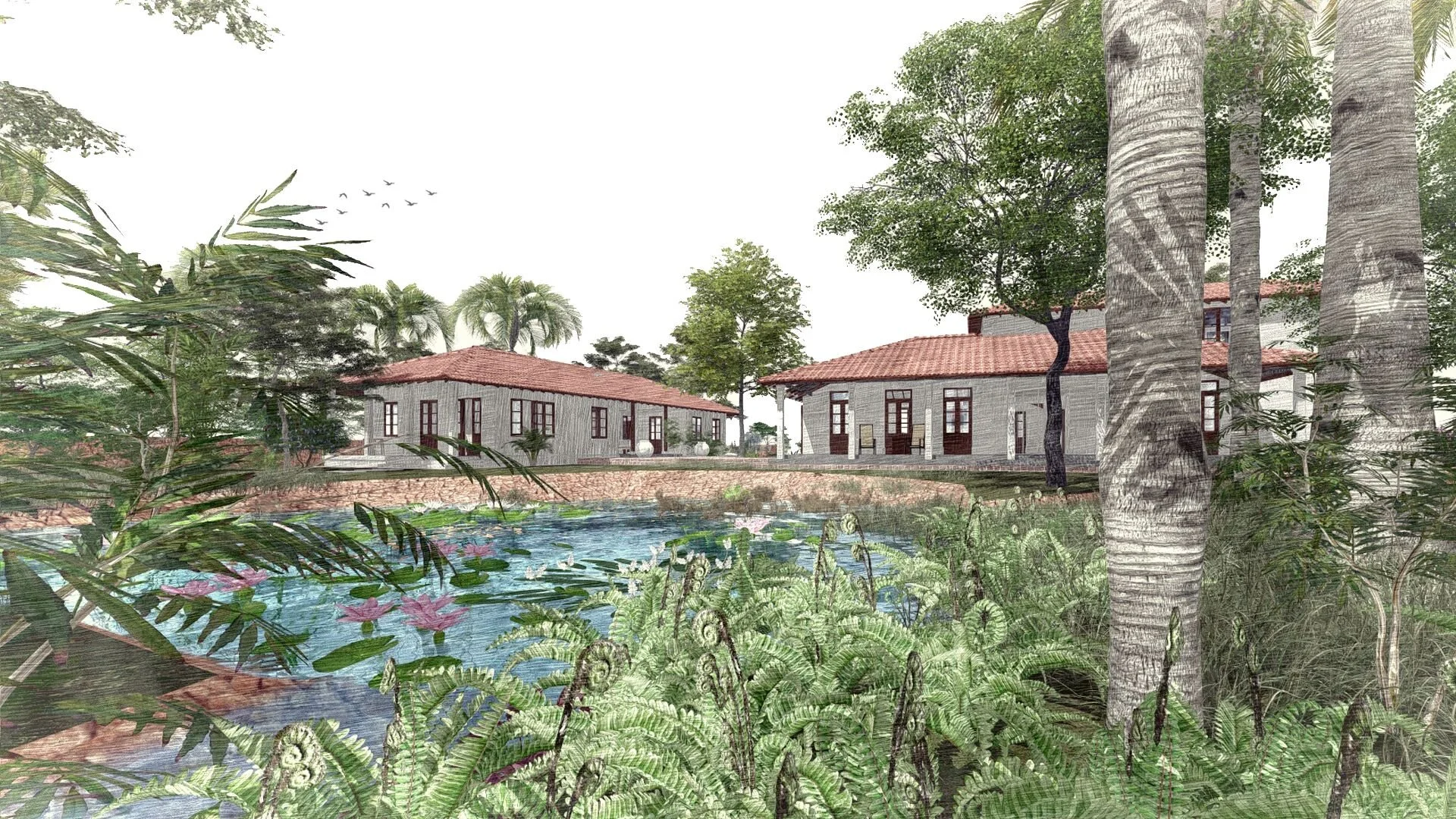
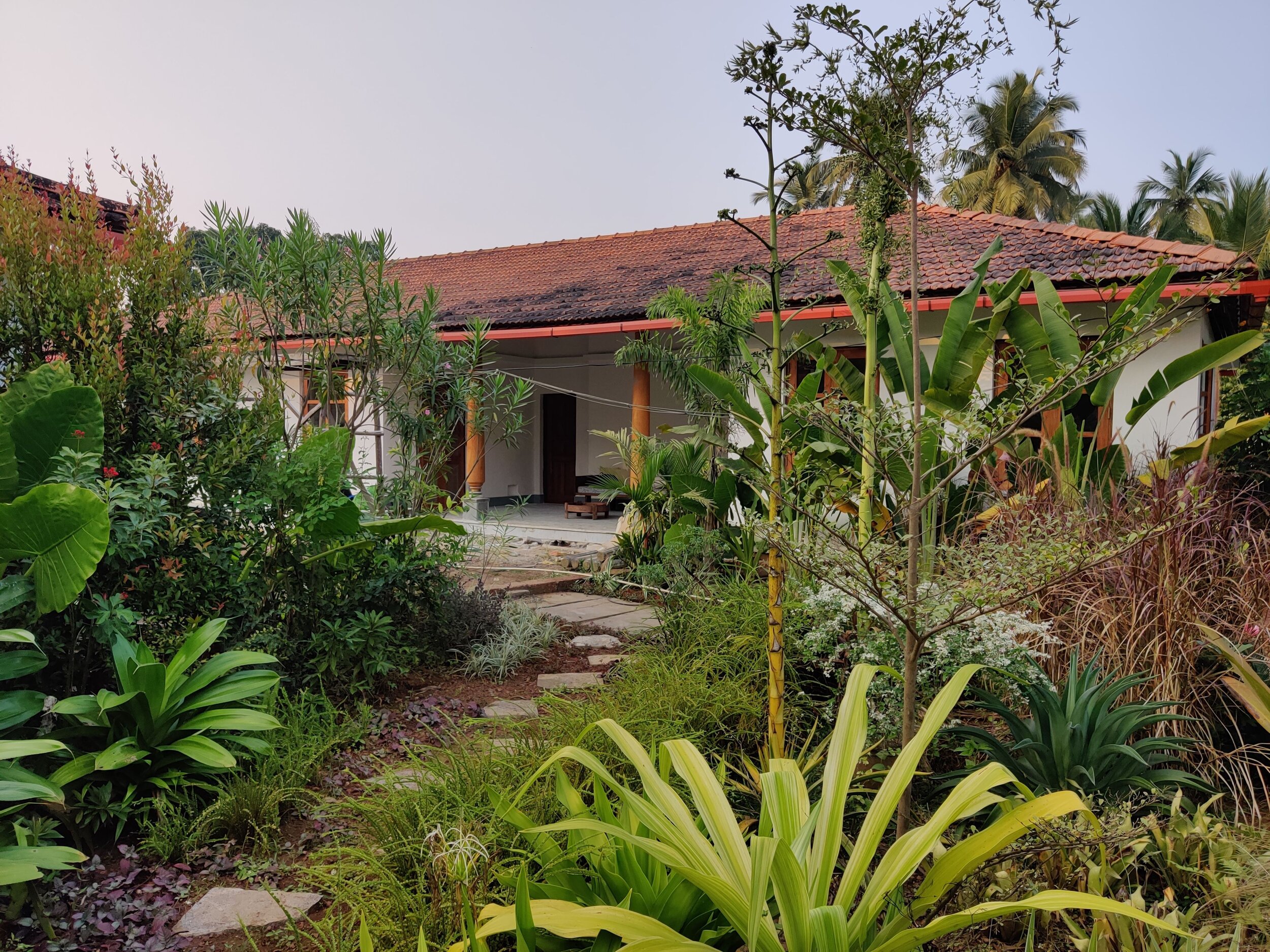








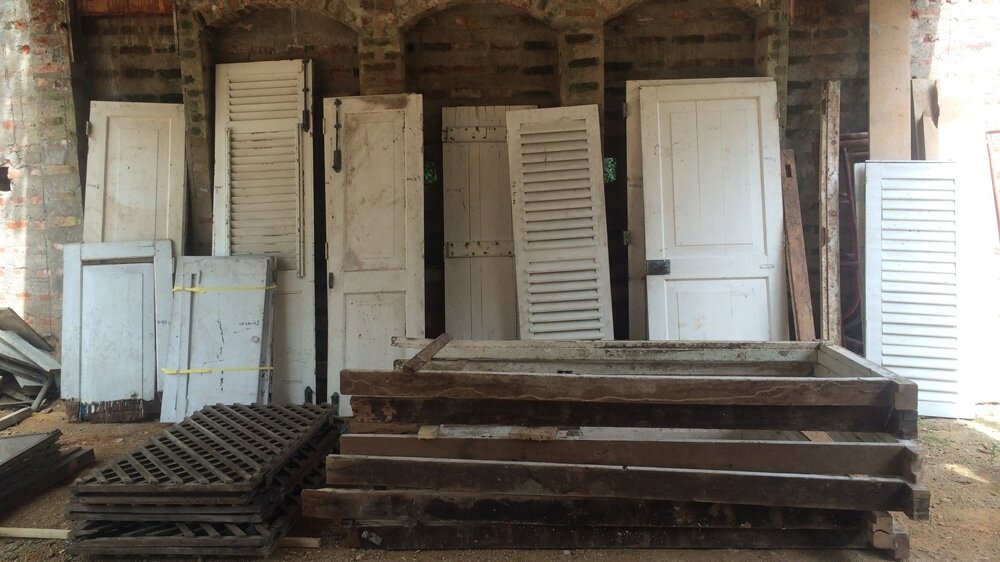







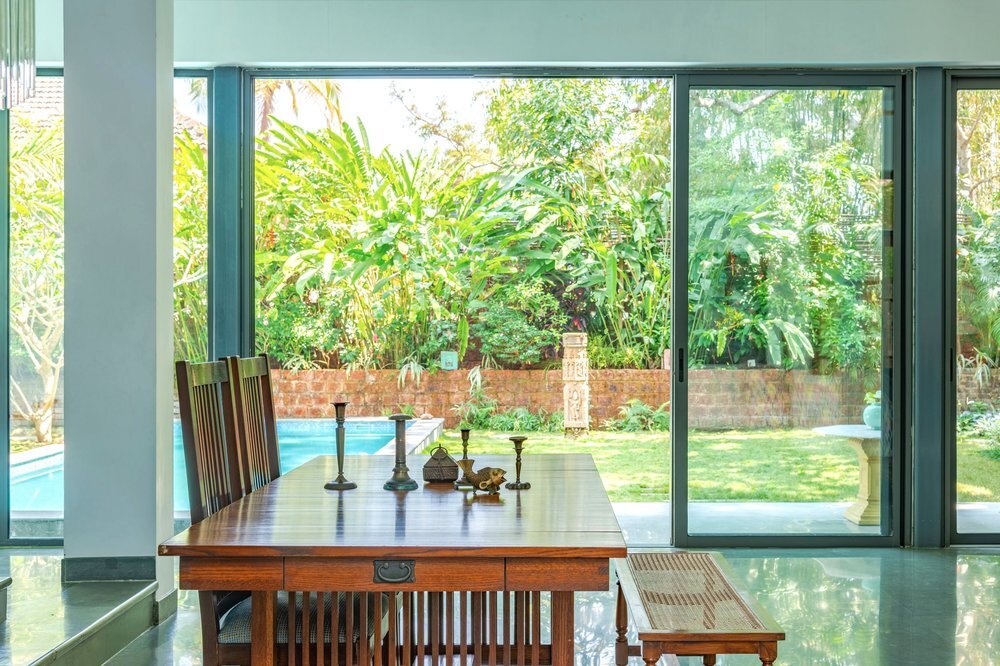



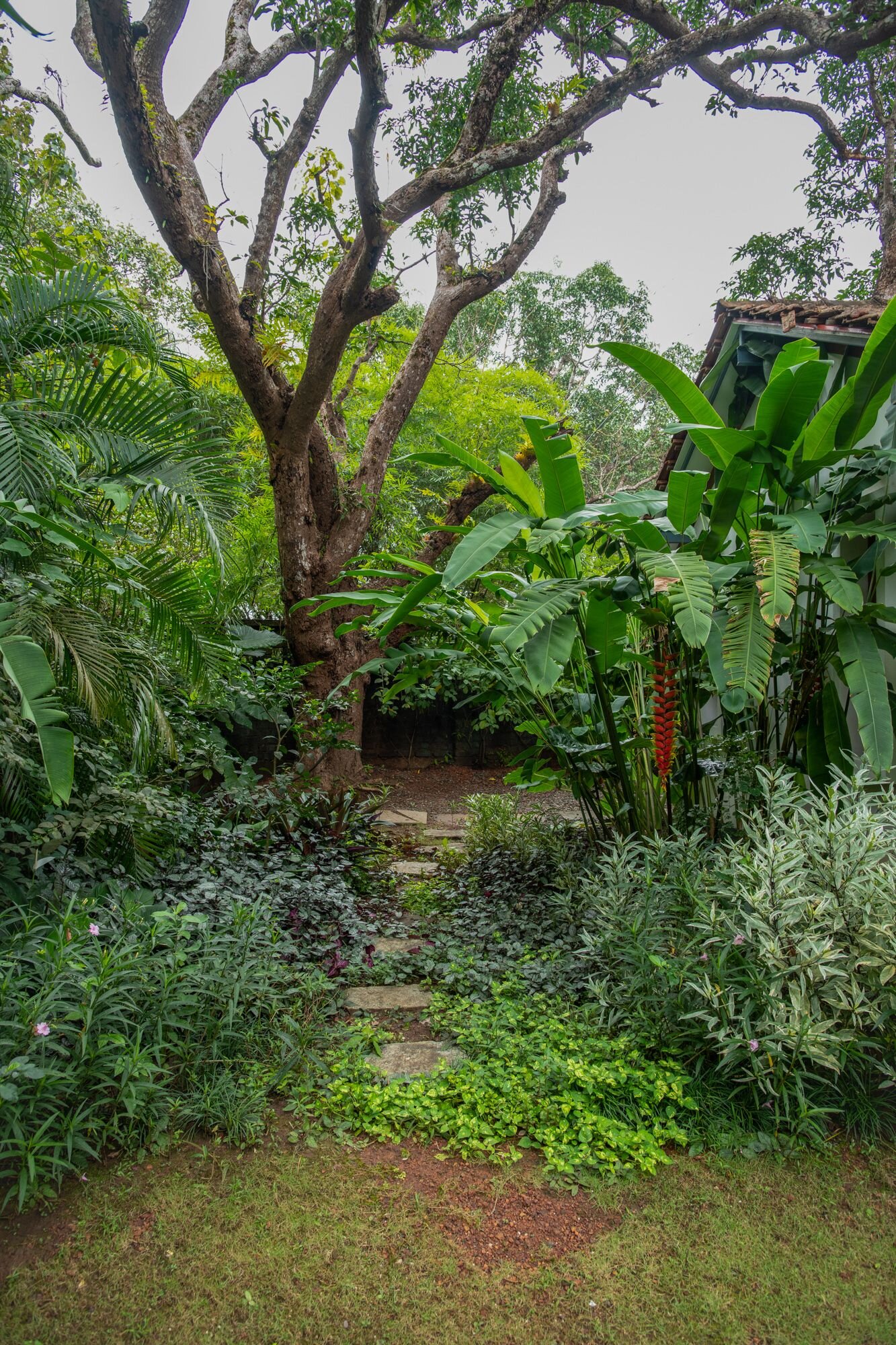
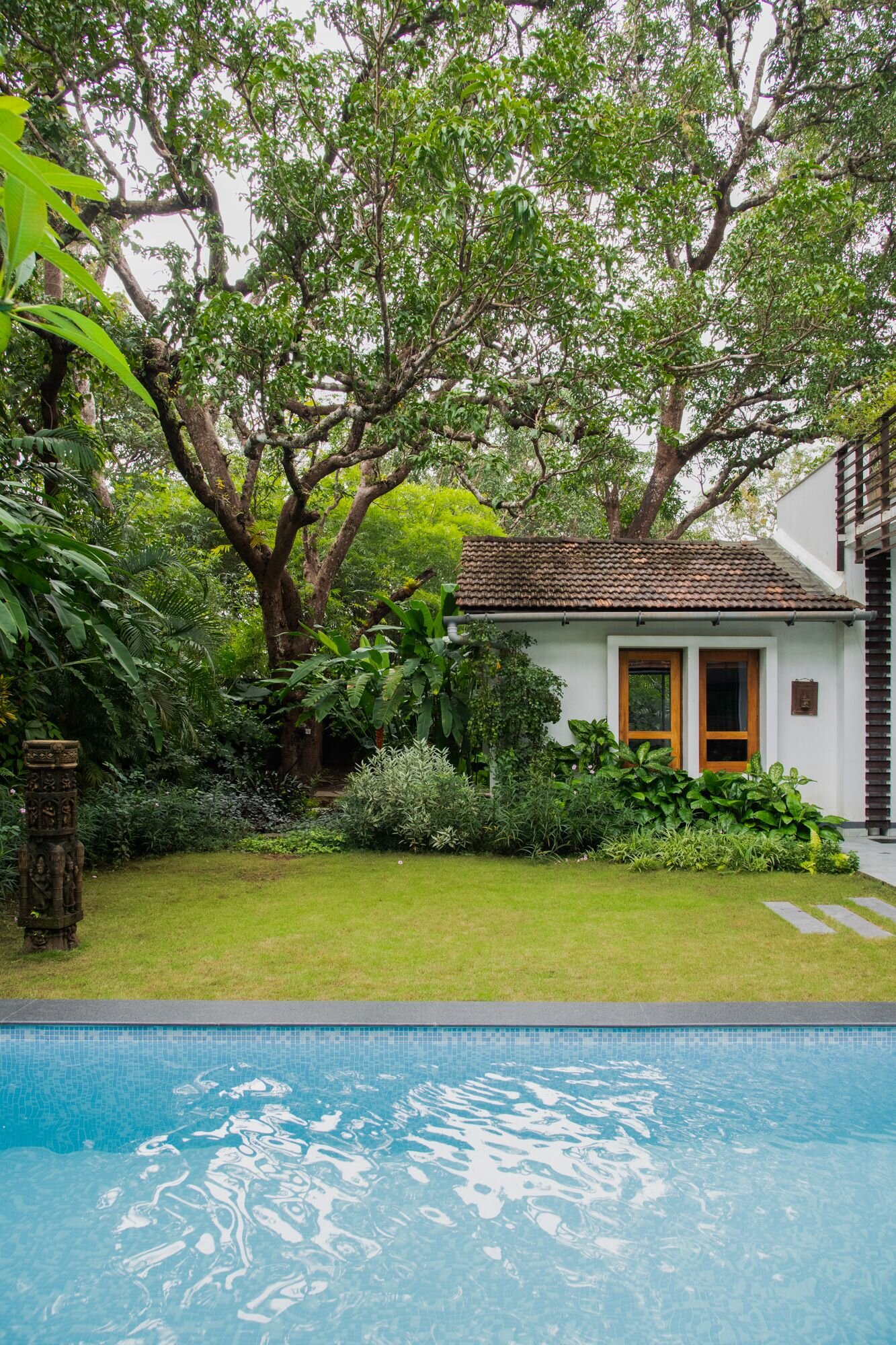
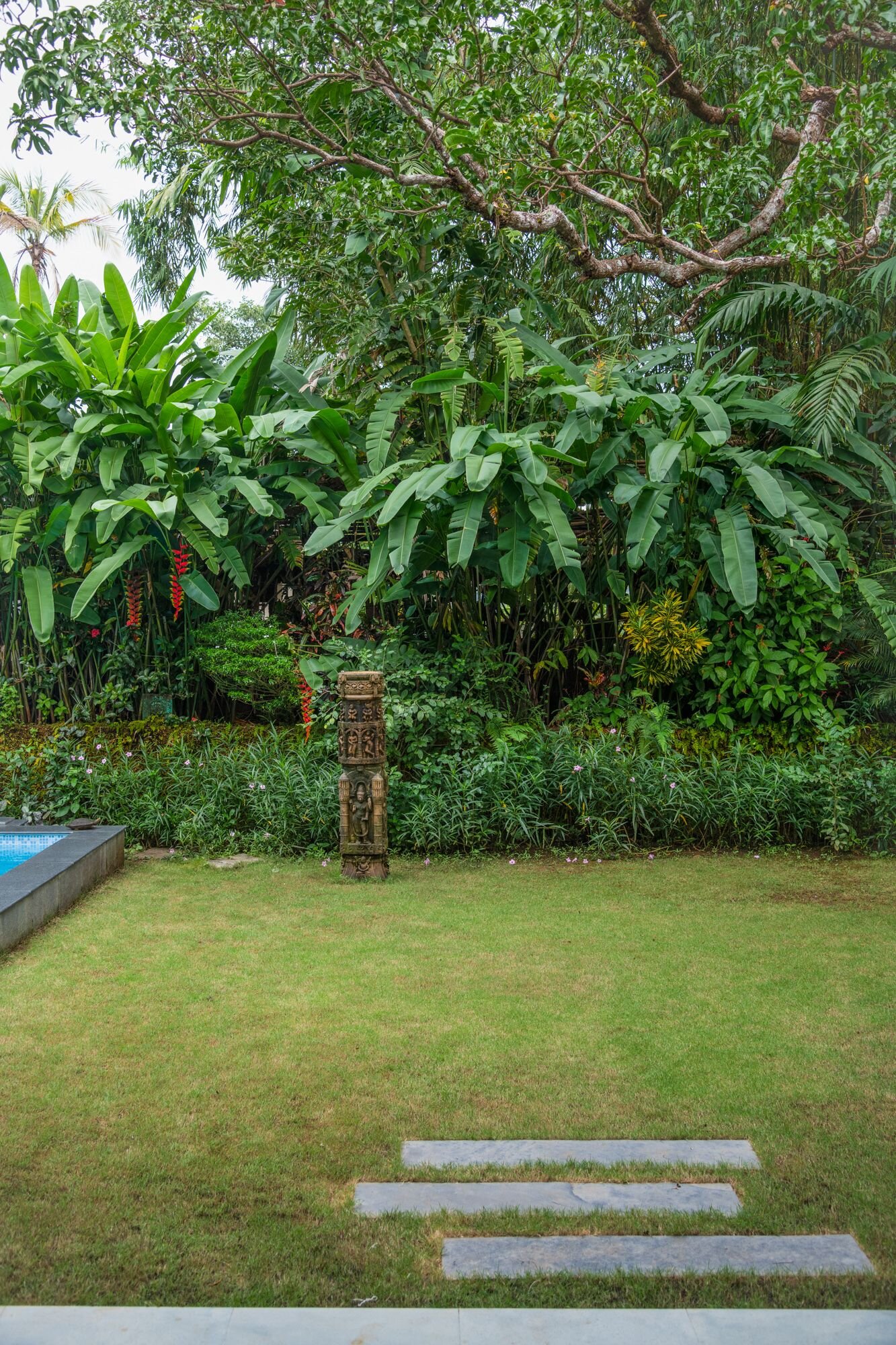








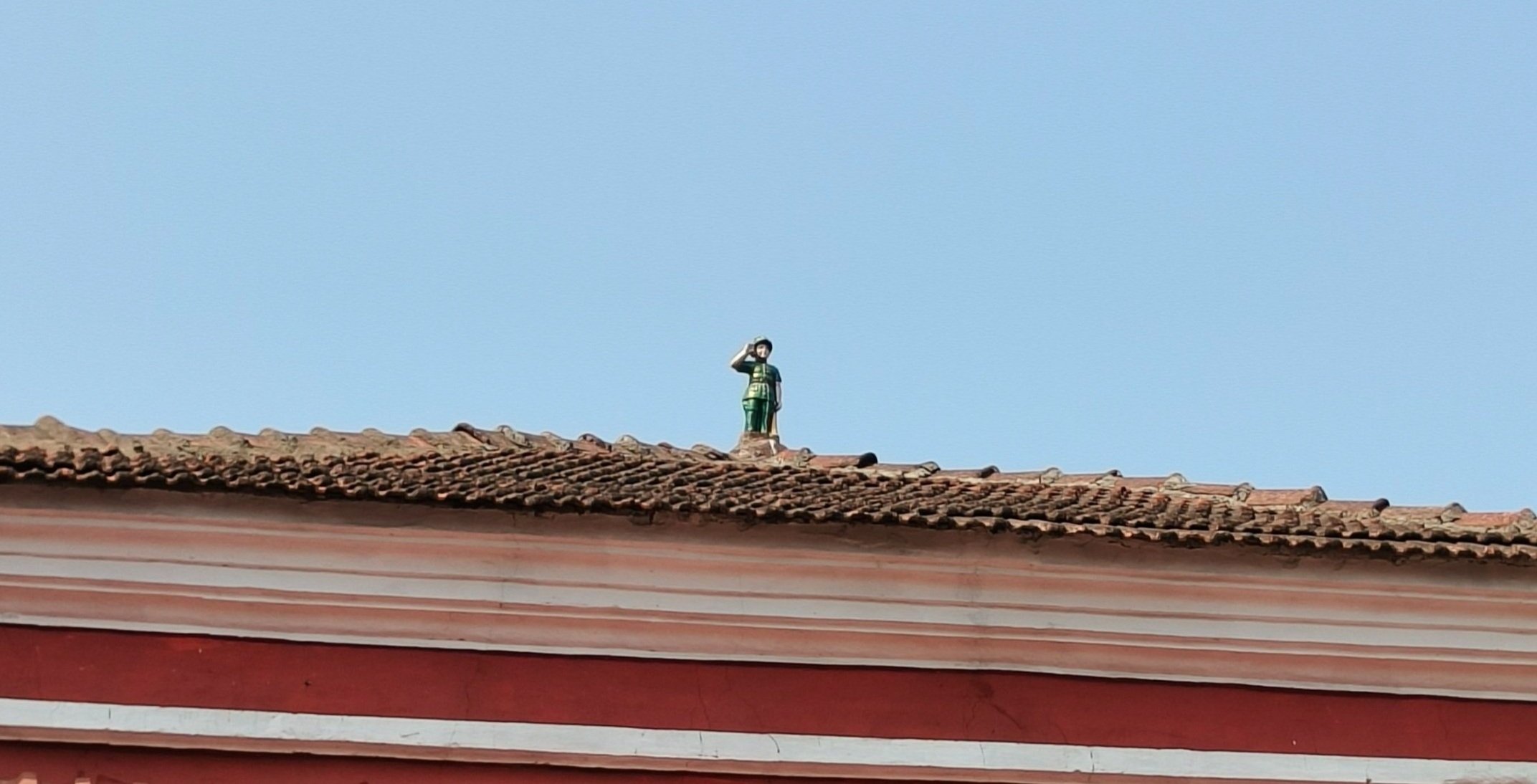


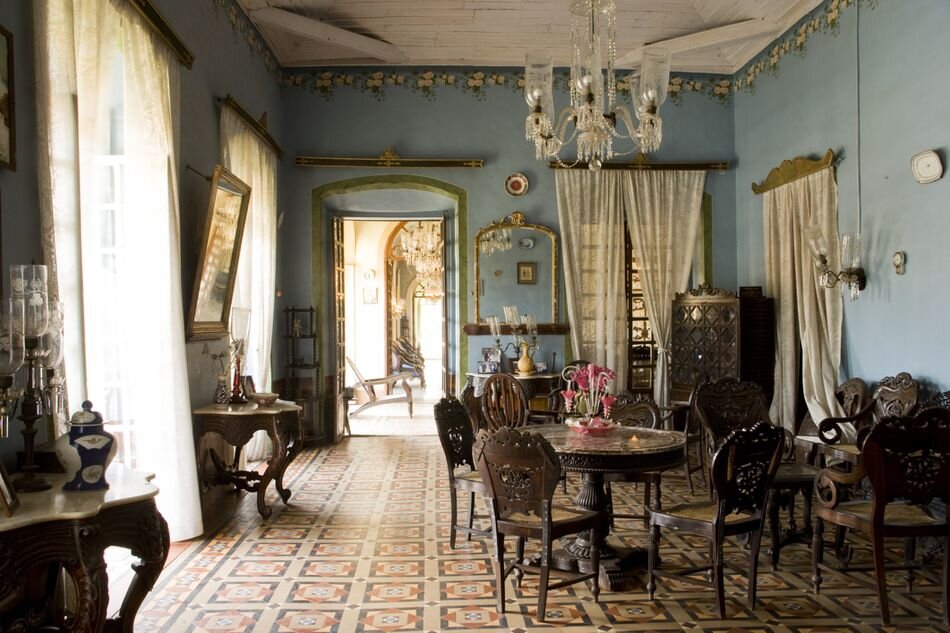



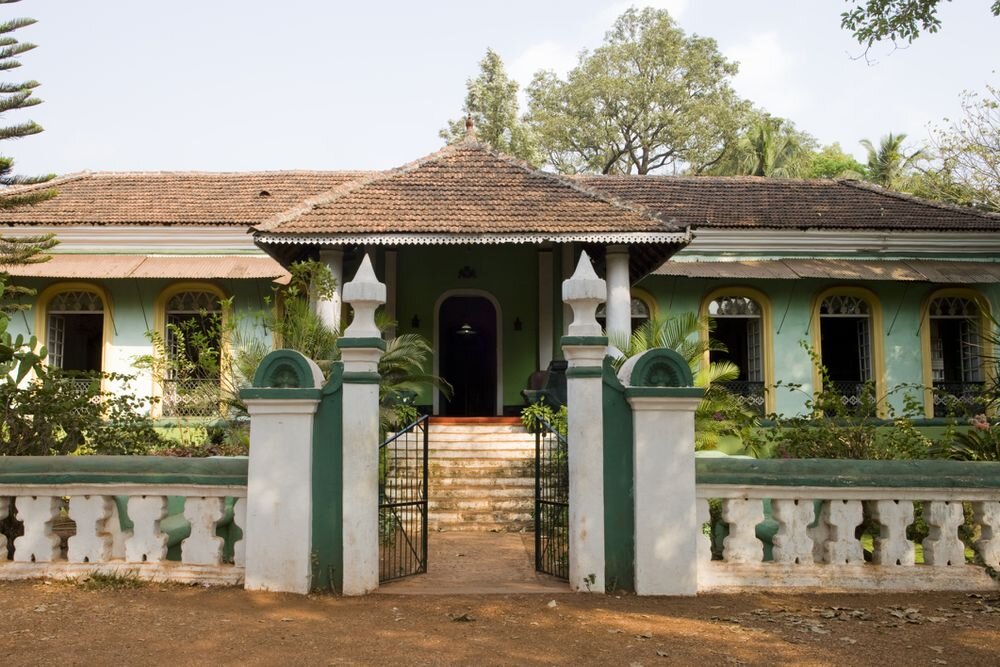





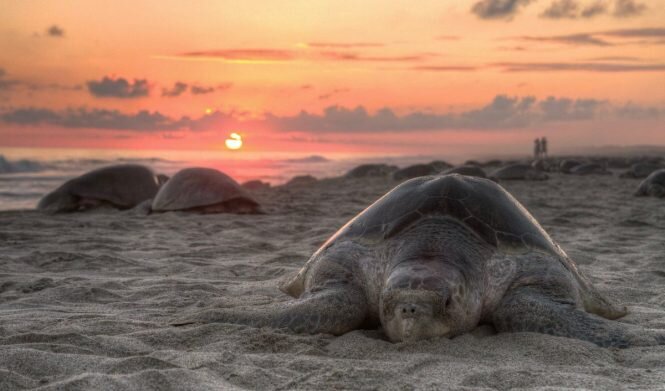


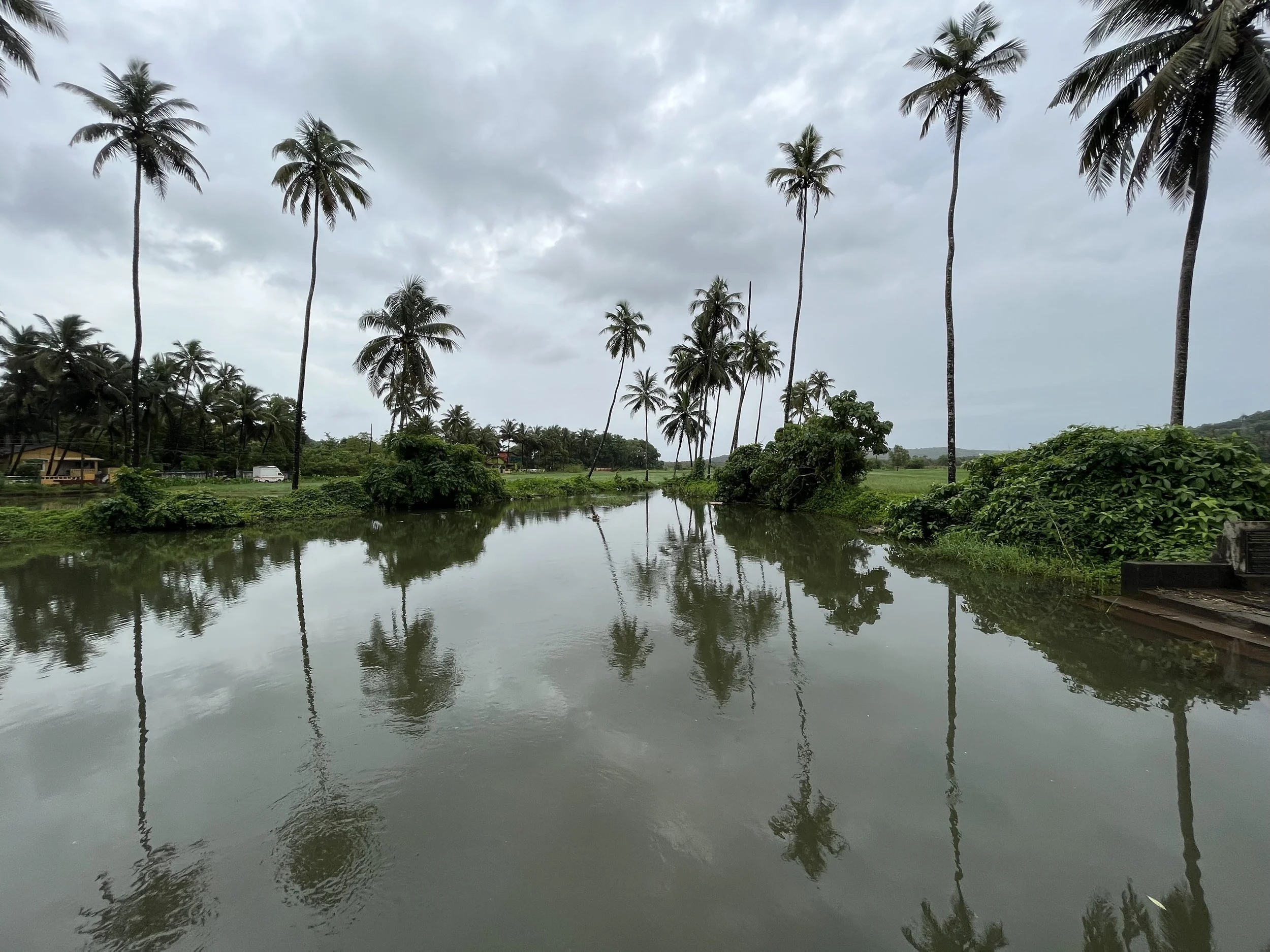
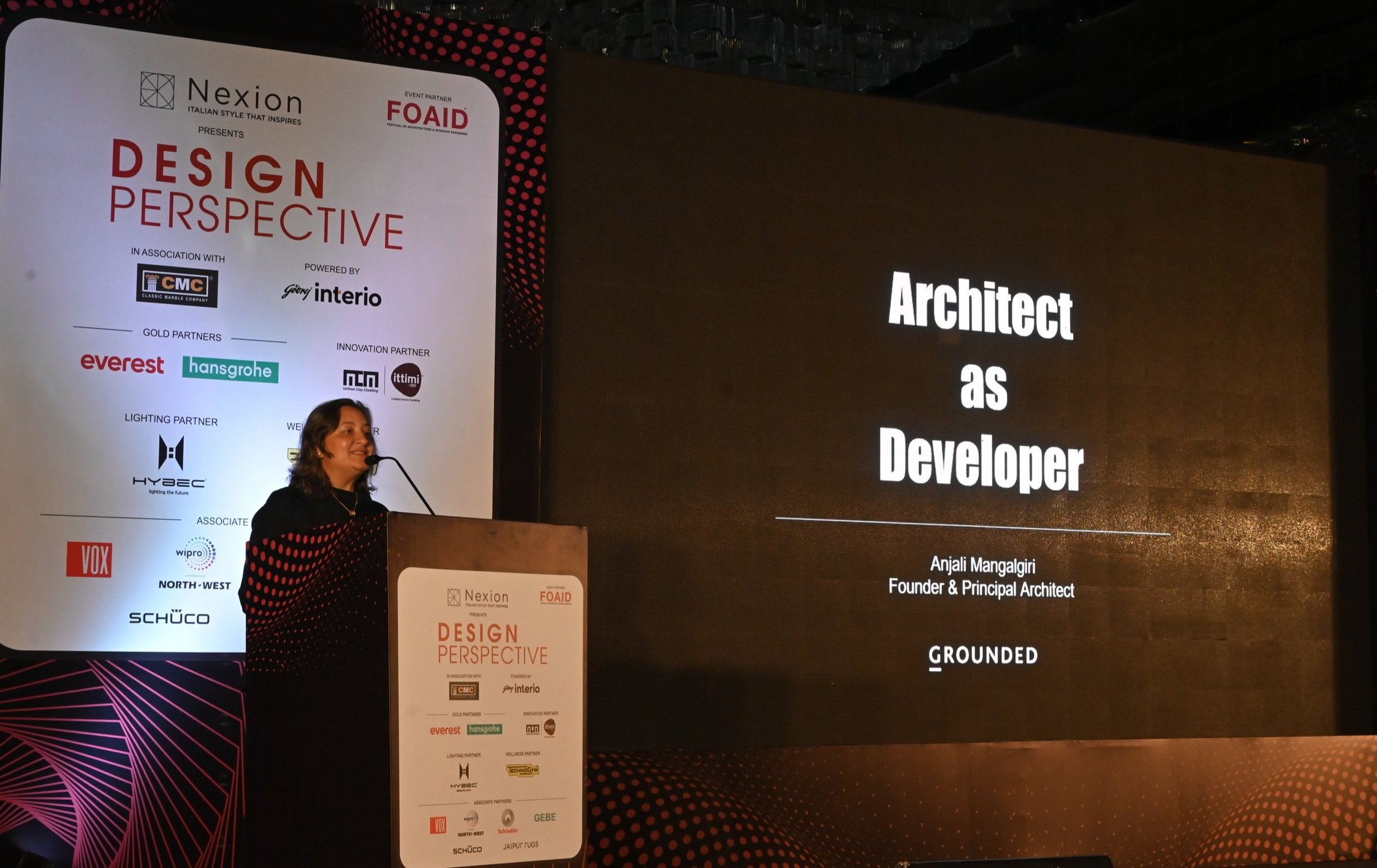

Celebrating the rustic yet contemporary nature of Utsav House by architect Bijoy Jain.